"To deal with depth as width in lateral view, to arrive at an isotropic space, the subject must leave his position, the perspective from which he sees the world, and think of himself within a kind of omnipresence"
Panagiotis Tsinikas - Diploma research and practice titled:
"Soi-veillance" based on the experimentation of using design and visual arts tools.
First, an improvised mask is designed for self-surveillance, and then, through participatory acts - performance, what happens to the person when he or she is using self-surveillance.
The work started with some personal reflections on the subjects of surveillance, and specifically on self-surveillance.
The problems had to do with the need to make our self-image conscious when we see it as a third party. That is, the way we present ourselves to others and what would it be like to have access to the other's "view" of us? This objectified bodily consciousness is associated with self-surveillance, that is, monitoring and engaging in the evaluation of our Self Design, we become the creators and judges of ourselves.
The problems had to do with the need to make our self-image conscious when we see it as a third party. That is, the way we present ourselves to others and what would it be like to have access to the other's "view" of us? This objectified bodily consciousness is associated with self-surveillance, that is, monitoring and engaging in the evaluation of our Self Design, we become the creators and judges of ourselves.
Design is a very basic human need to express oneself personally, and as a graphic designer, I have learned that I have to ask myself how I want or how I should express myself aesthetically, what form I want to give it and how it will present itself to them. We are in constant contact with design, and if we don't understand it, it is because it is done unconsciously, as there is an obligation to improvise as we design our personal space, our style, and even the near and far future.
Returning to the name of the thesis "soiveillance" which results from the French words "soi" (self), and "veillance" (surveillance). The user experiences the real environment through a different perspective. The process has to do with the person seeing himself with access to the surveillance media (cameras). The experience of reliving real space has nothing to do with virtual built environments. The body feels the space around it, can touch objects and process them. Also, the person is given the opportunity to observe his body from an external perspective. As the user begins to observe himself, as the observer, he becomes the observed, and these two qualities are constantly clashing in the mind throughout the action-performance. The projects like all other virtual environments (VR, AR, MR) are happening using wearable devices.
The mask
For the implementation of the project, an improvised mask was made.
The style and way of making the mask was based on the ideological field of D.I.Y.
The choice for the mask was made by studying the works of Lygia Clark, and Steve Mann's wearables in combination with virtual reality masks (Google cardboard, Oculus rift, VR headset).
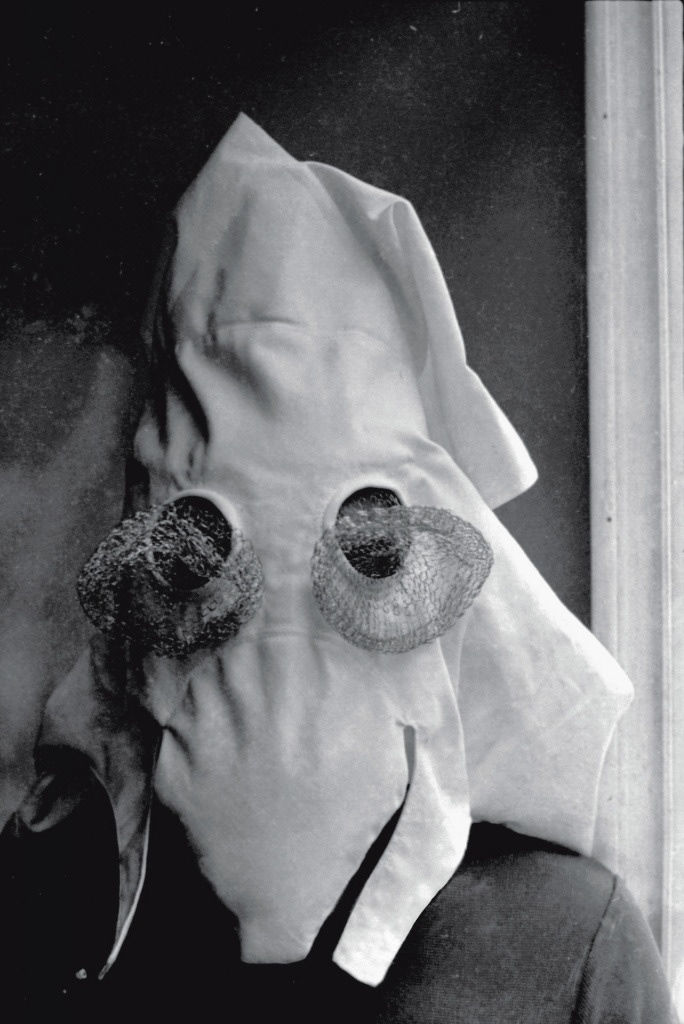
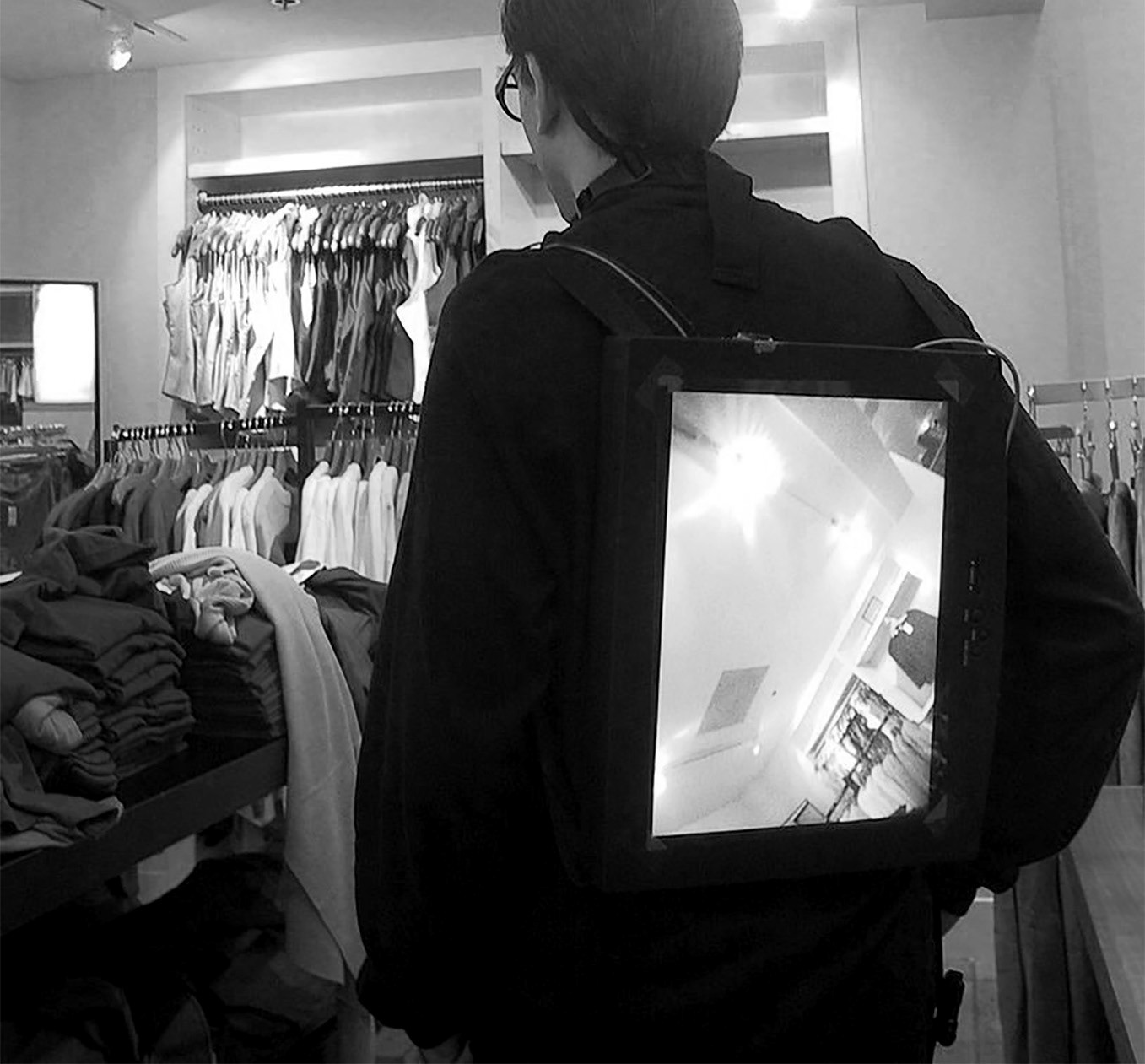


To begin with, a study was done on Google's cardboard mask on which the mobile phone is placed as a display. Various ways in which one can build it were presented on Youtube. The limitation was how the user will be able to see the mobile screen with naked eyes, as there is no auxiliary lens for vision. So the mobile phone must be at a distance where the eye can focus for a long time and not get tired, resulting in the mask being longer.
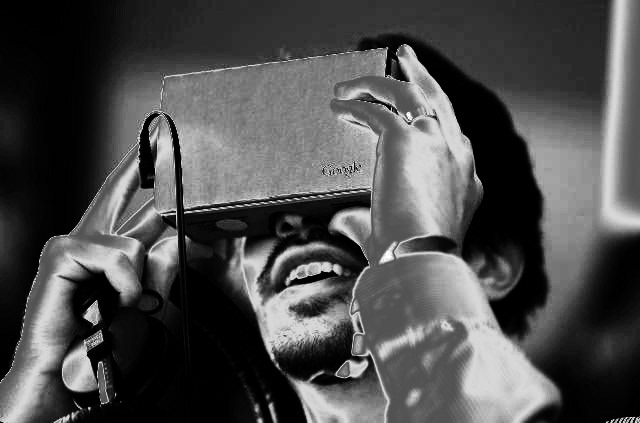
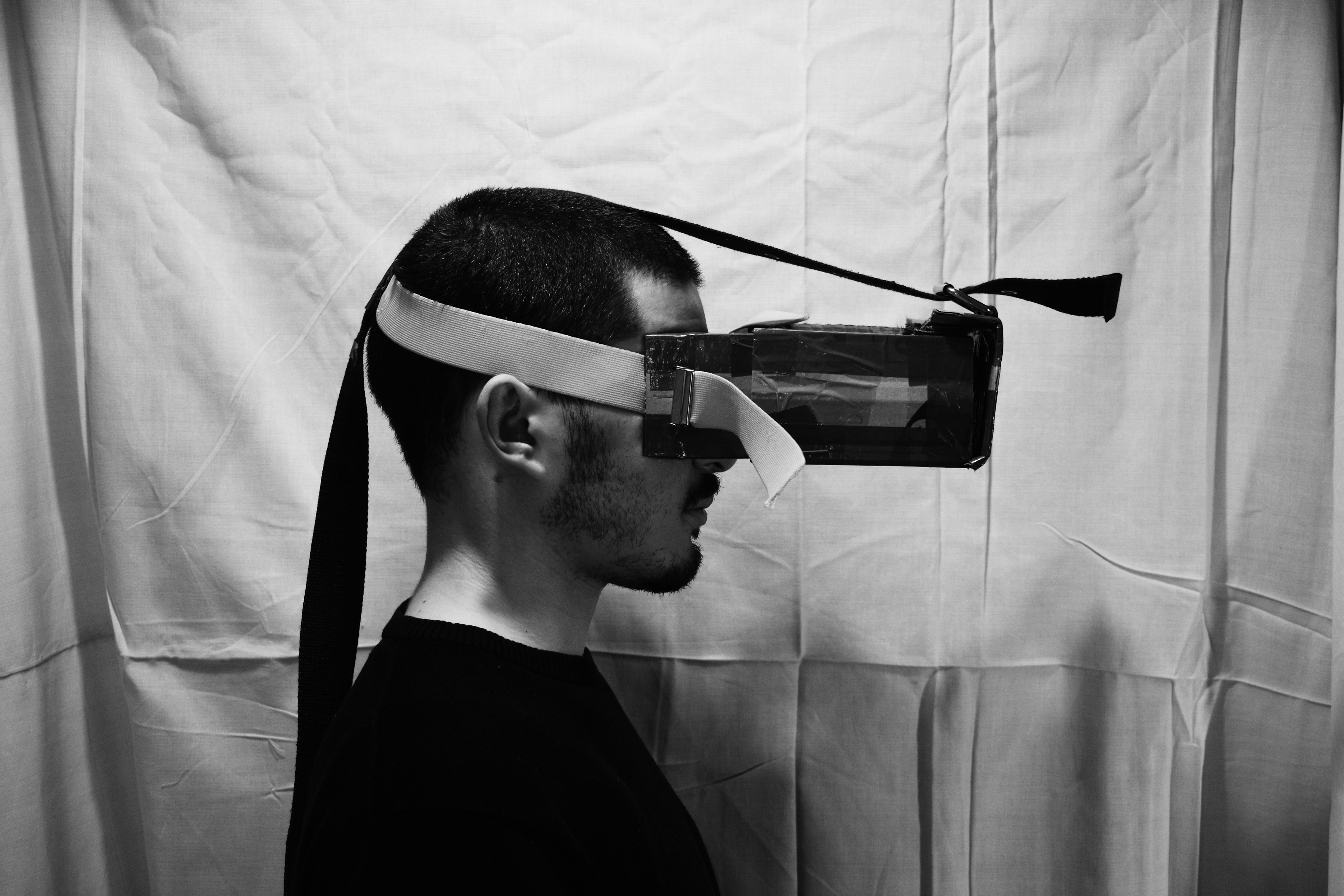
Google vr cardboard mask D.I.Y. cardboard soiveillance mask
The next problem that arose was that, since the mask is long and narrow and the mobile is placed on its edge, there will be enough weight. With the practice of bricolage, the cardboards were cut and glued by me to form the original form of the mask. After the main part of it was built, an extension was added so that the mobile device could fit. To support the head was placed a cut belt, elastics from suspenders and buttons from a sack. This initial form felt very light, but at the same time uncomfortable to use as the rubbers pushed the mask quite a bit towards the head. Then, using the pyrograph, a mask was created from these plastic CD boxes, gluing them one by one. The end result appeared to be a failure as its weight was impossible to support by the human head.
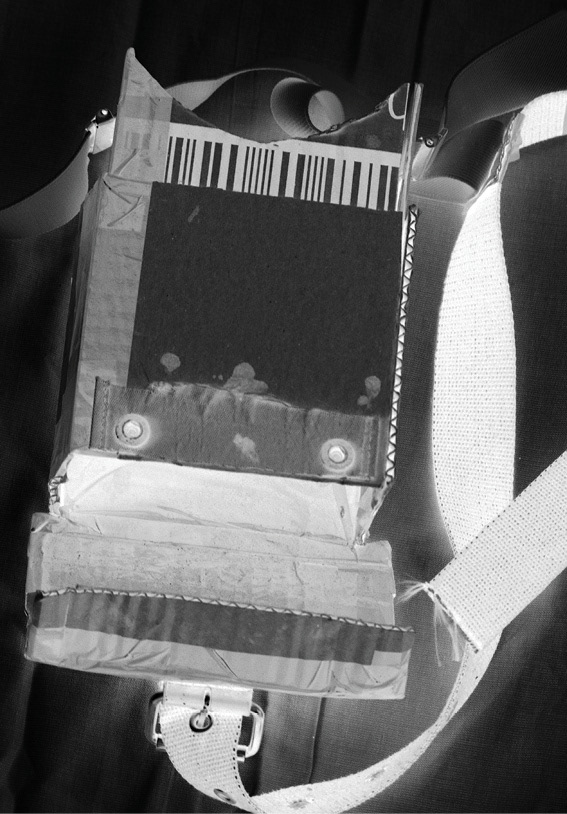
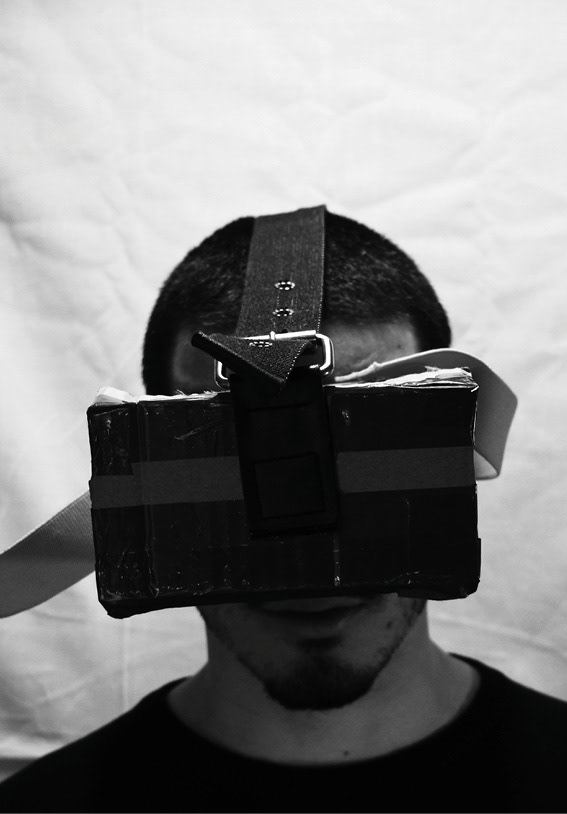
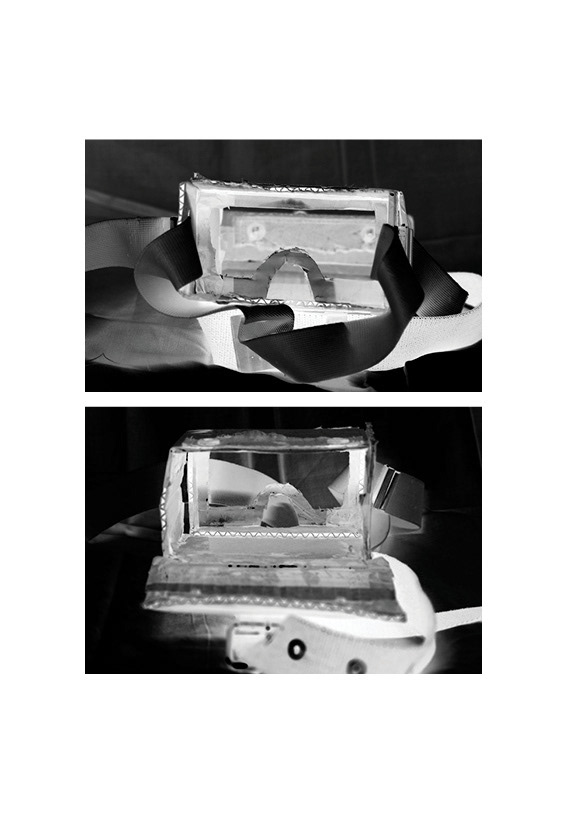

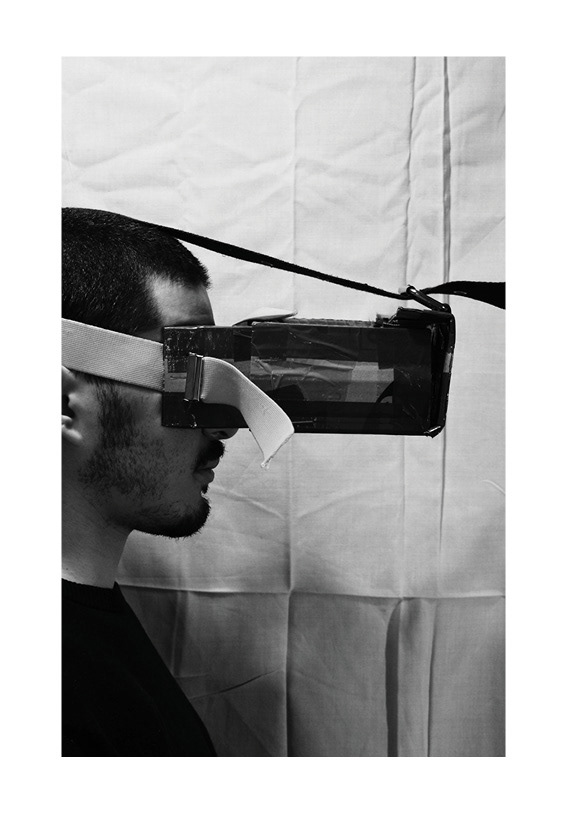


The consideration for comfortable use and adaptation to different heads was great. Looking for head support mechanisms, welding masks seemed an ideal choice, as they are made to be used for long hours without tiring the user too much. So, with the acquisition of a used-broken mask, it began to be redesigned to now provide another mode of operation. With the boxes from the CDs an extension of the mask was made to place the telephone device.
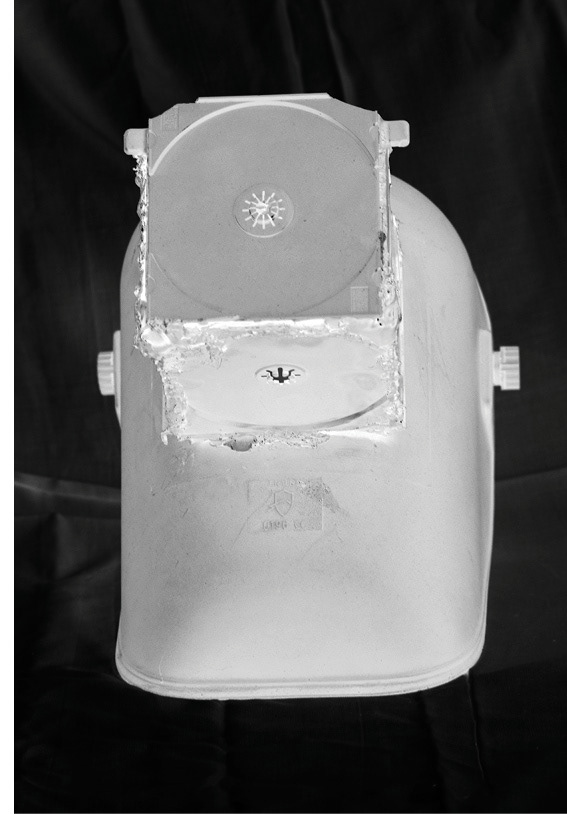
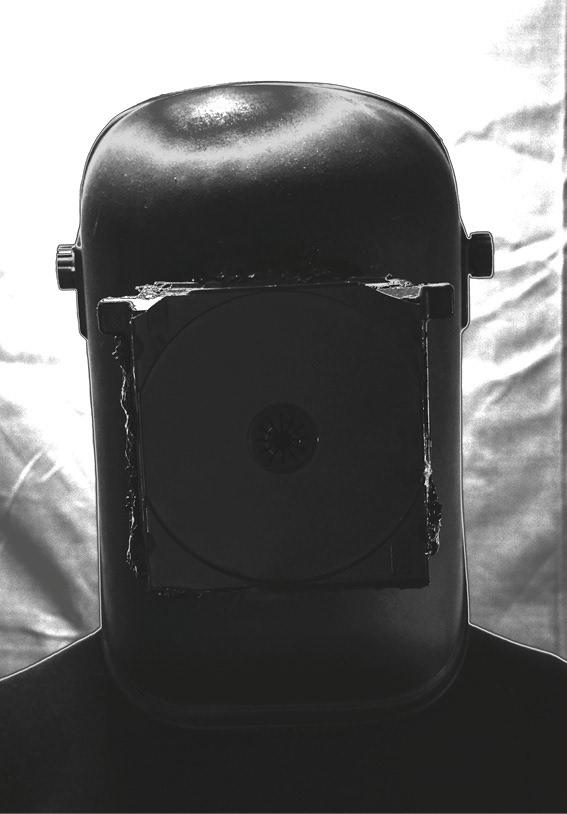
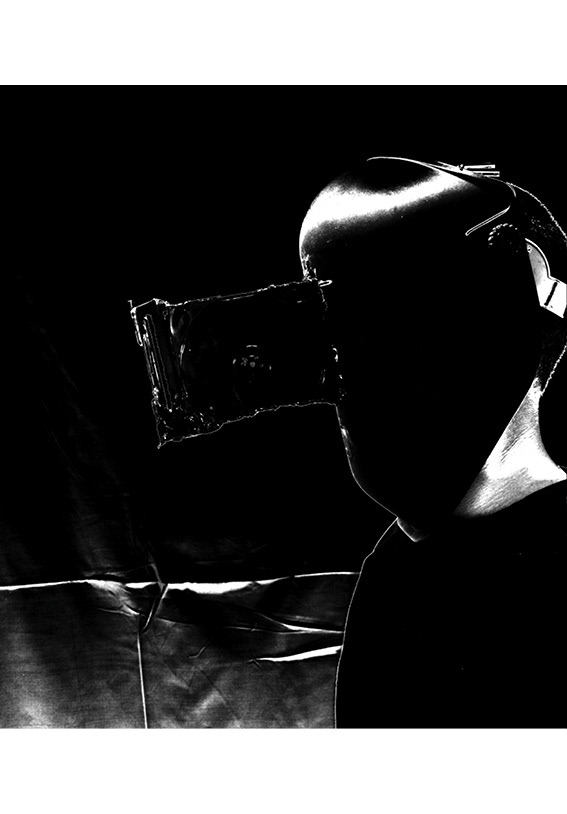

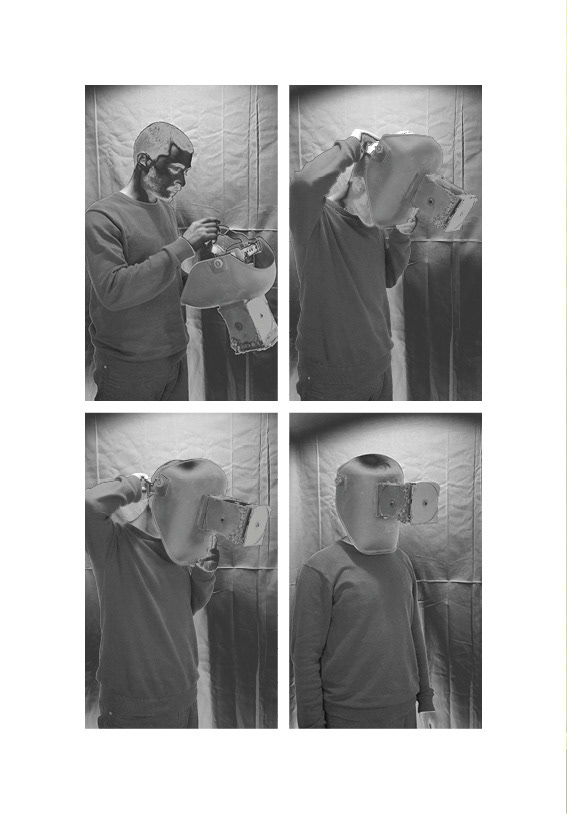
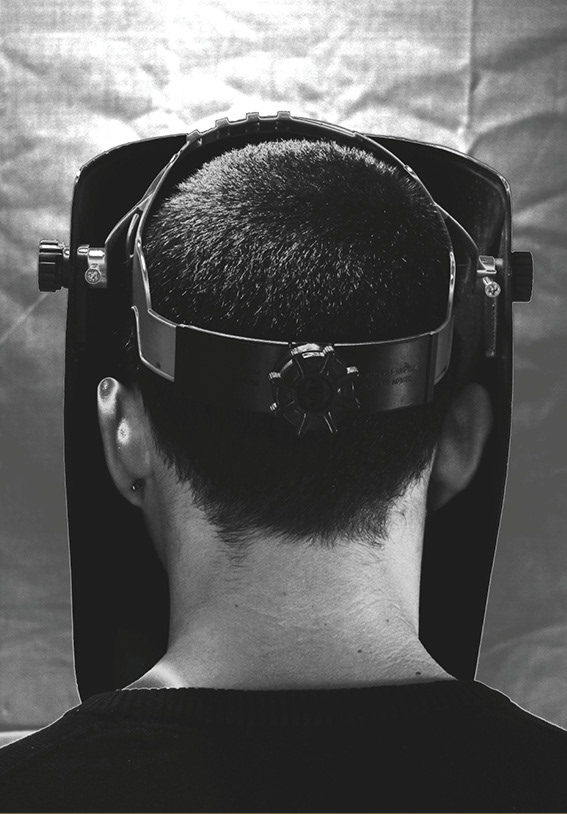

From the moment it was decided to involve the public in the project, it was necessary to find the way in which they would participate and what would be their relationship with the project.
"I wanted to see what happens to the person wearing the mask and how I, as a director-conductor, can design the bodies in the space that will be guided by me."
Thus, based on the new theoretical frameworks that have to do with the relationship between the artist, the audience and the work, a participatory performance was organized in the school hall, which began by informing the audience about what was to follow. Then one person put on the mask that had the cell phone on it, while the others wore simple welding masks. Each also had a full body white protective suit as I felt there needed to be a resemblance to each to make it difficult for the observer to distinguish themselves.
Once the instructions were given, the first physical exercise began entitled: "Mirror", which had to do with reflection and control. The "Maestro", who was the person with the mask, had positioned his body opposite the four other people with the plain masks and the goal was for the other people to copy his movements. Every seven minutes the Maestro changed and the masked person went to the opposite side where he was now guided by the new one. After that, there was a small talk and the introduction to the second physical exercise entitled: "Dialogue". The instructions given were that four people had to form two pairs that had to communicate with each other through touch. Each person could make one move at a time and always touch the other. Since one made the move he had to wait for the other to continue the conversation. My goal here was to see the difference between the pairs (the pair with the mask and the normal one), and then chat about how the individuals felt.



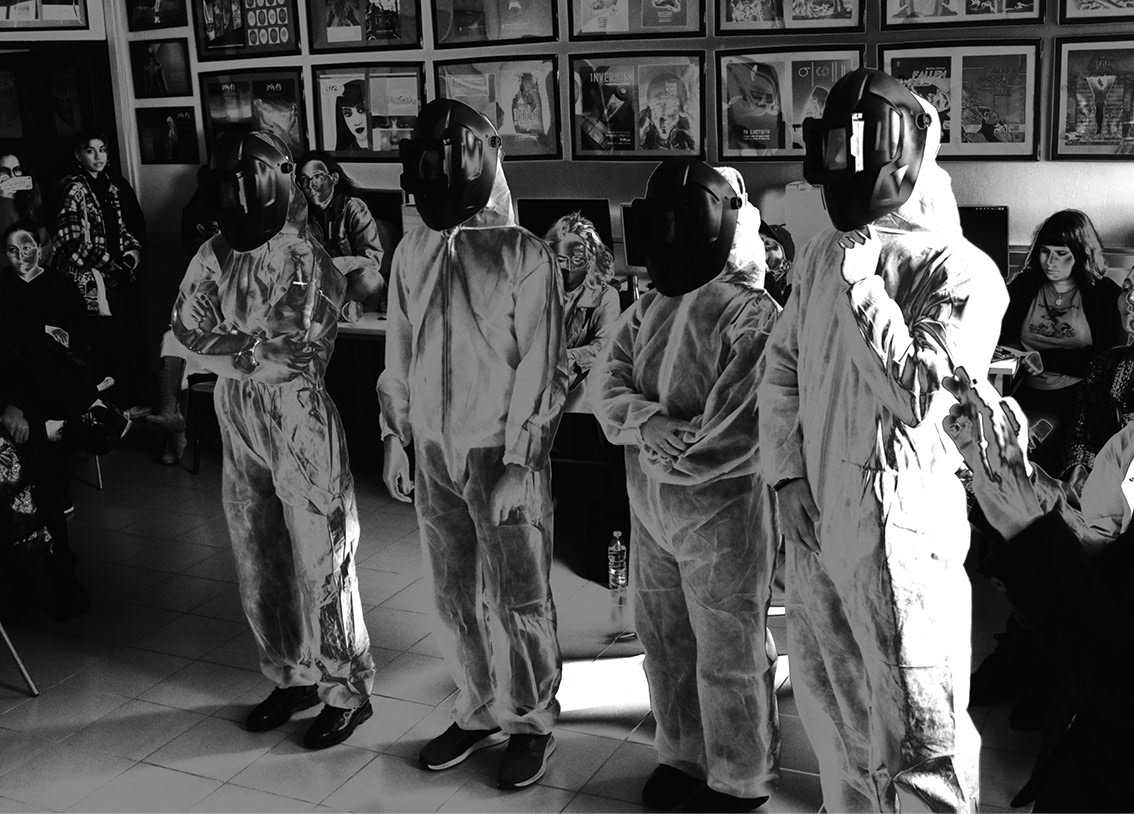

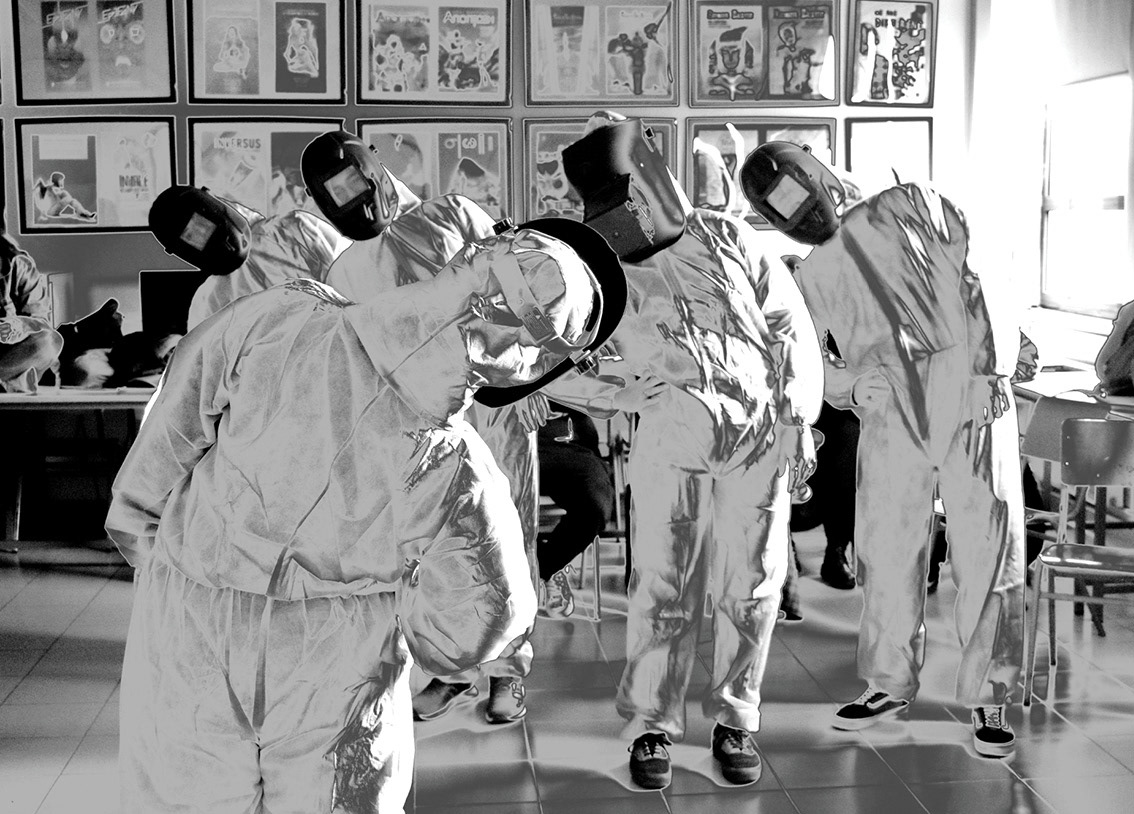
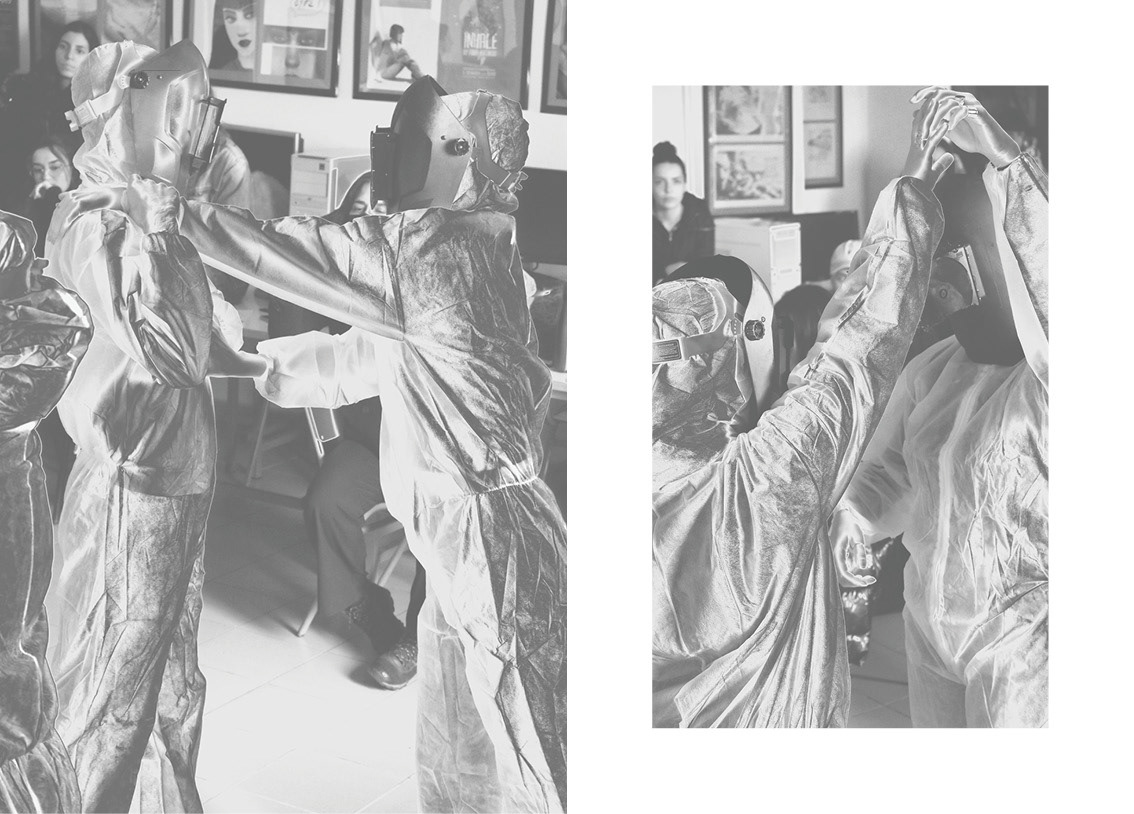
After the exploratory performances, I realized that the way to record what happens to the person when he observes himself is not only through the planning of physical actions, but also by recording interviews about how they experienced the situation.
In order to understand for myself what is happening, through 2 personal recordings, I recorded the questions that arise in the person so that I can ask the participants.
The following recordings were made applying the artistic practices of Allan Kaprow's participatory art about informing the viewer.
The results of the recordings were very interesting, with 14 participants in total.
Initially, we see that the dizziness created in the subjects was only in the first five minutes, when the user first came into contact with the equipment until they adjusted. Almost everyone was scared in those five minutes, even with the talk before the recording, as they couldn't feel exactly what was going to happen next. Everyone observed themselves differently, some doing dance moves, others walking, sitting or lying in bed.
Some people felt bad about their image in the world, while others really liked it, and in this part I think how everyone feels about their body in relation to social standards also plays a role, which is also a separate factor.
Also, many felt as if they were seeing another person at certain times, especially when they were standing still. At the same time, it was observed that it was very difficult for everyone to orient themselves in the space, as their perspective constantly changed the layout of the room. Although the layout was always the same, it was very difficult for everyone to set reference points in relation to their bodies in the space. "It's like having your eyes closed but seeing at the same time, only when you move your head nothing changes, your perspective stays the same." Furthermore, it was found that everyone monitored themselves because they criticized what they saw (improved their posture or tried to make a movement that looked better)
The overall project recorded all this experience which gave me all the positives:
it raised new questions and concerns for me about the relationships between the work, the artist and the viewer (discussed above), leading me to do a lot of research. Also, construction issues were then raised about:
-object design,
-the design of bodies in space
-action planning
-the design of a book.
-the design of bodies in space
-action planning
-the design of a book.
The Book
The book was specially designed to be able to convey the psychology of the project while at the same time being a presentation of the course of research and application of the practices used for it.
Combining 3 types of paper, Munken Lynx 120gsm for the text pages, and Metallic and Chromolux for the photo pages. I can say that it was quite a challenging process from the beginning with the design, to the binding of it there were times when I had to improvise and give the best possible result.
Combining 3 types of paper, Munken Lynx 120gsm for the text pages, and Metallic and Chromolux for the photo pages. I can say that it was quite a challenging process from the beginning with the design, to the binding of it there were times when I had to improvise and give the best possible result.



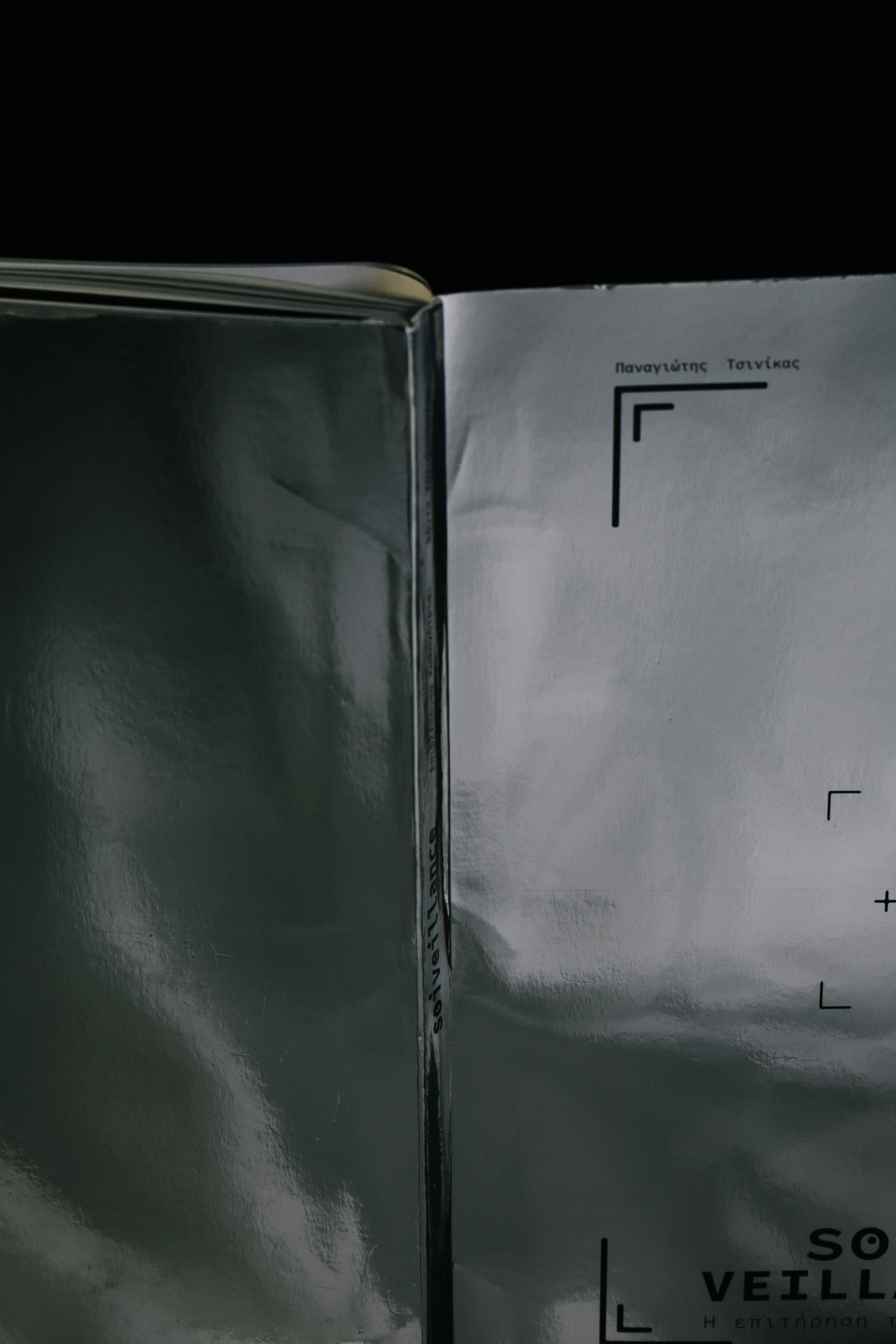


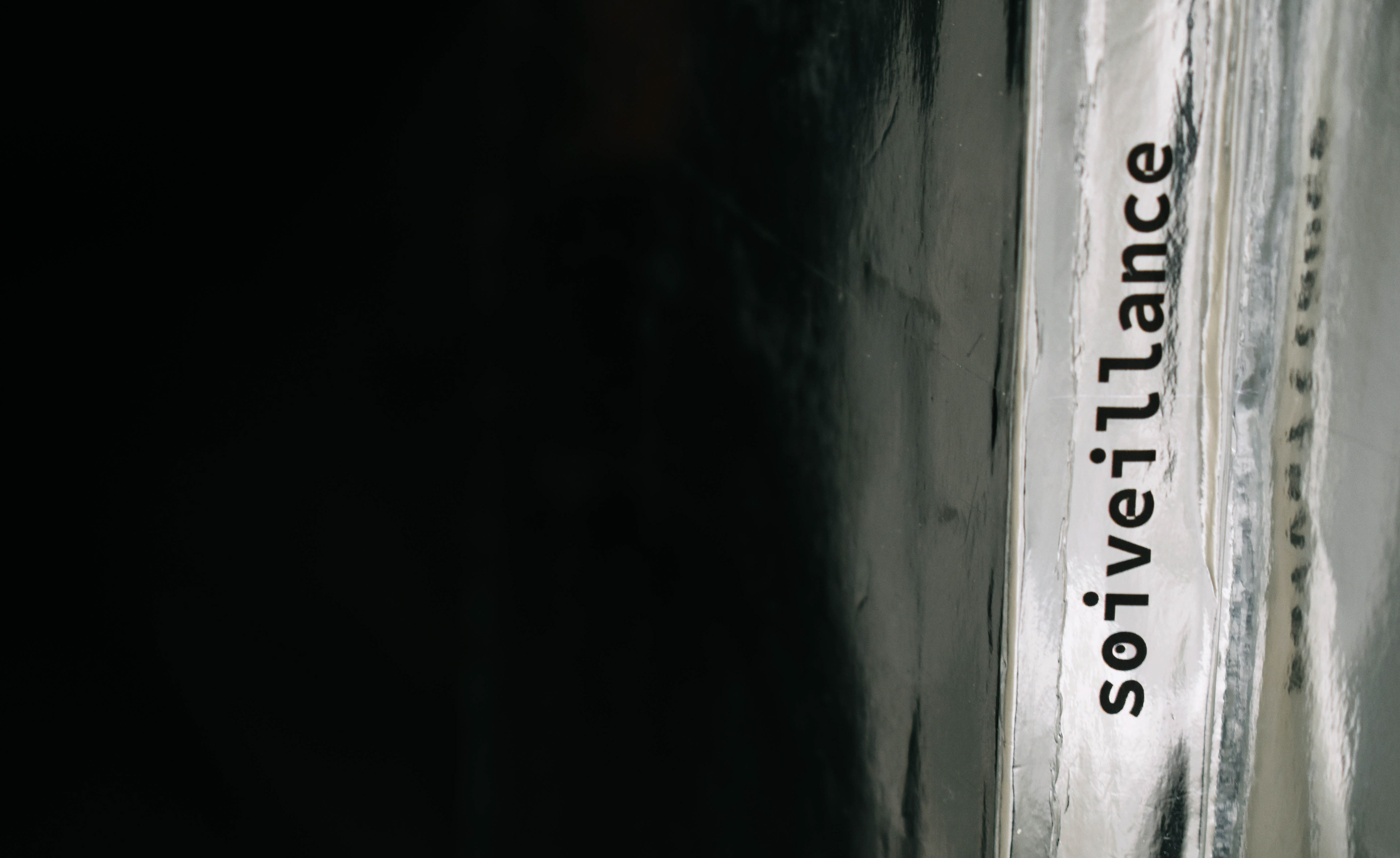

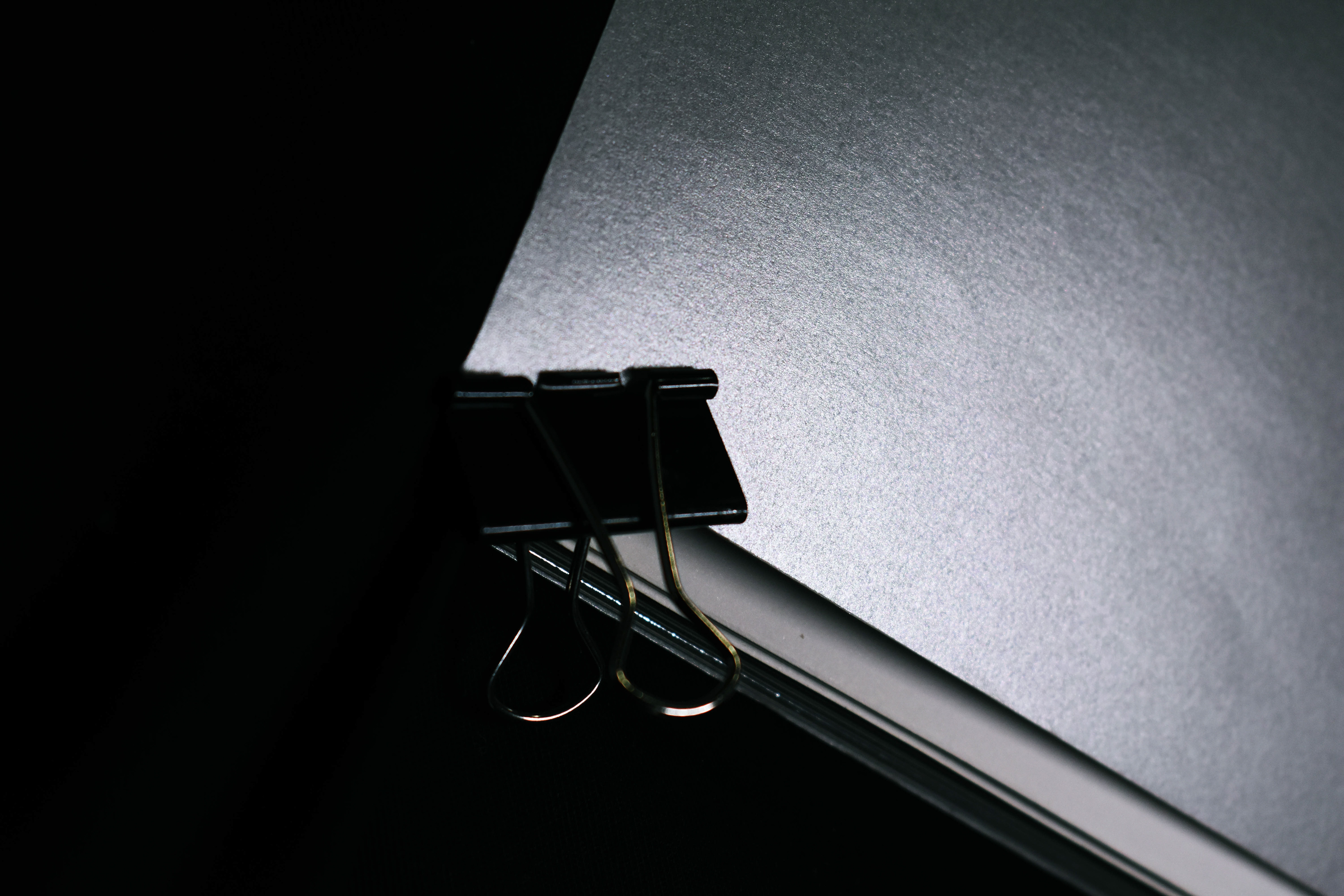
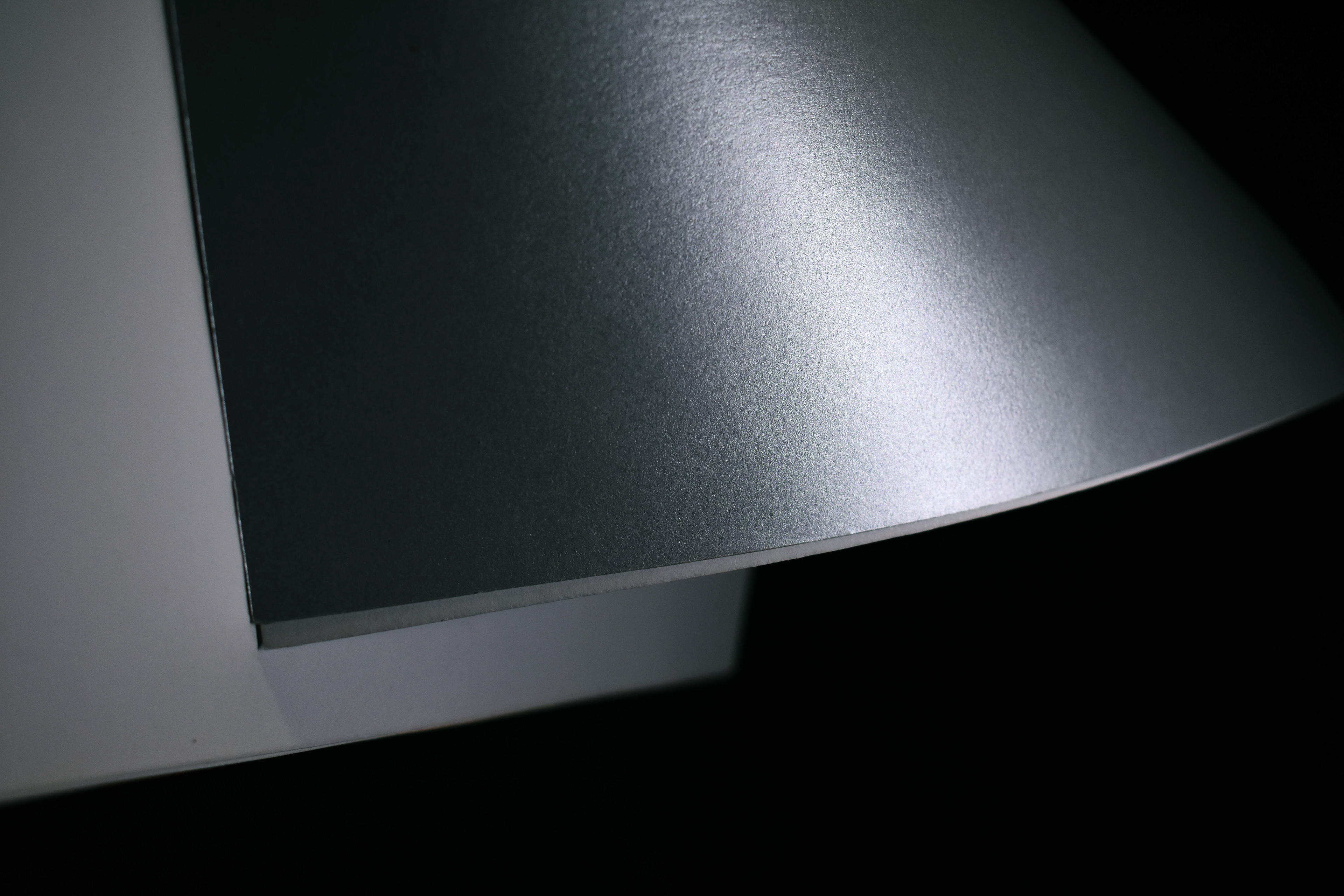

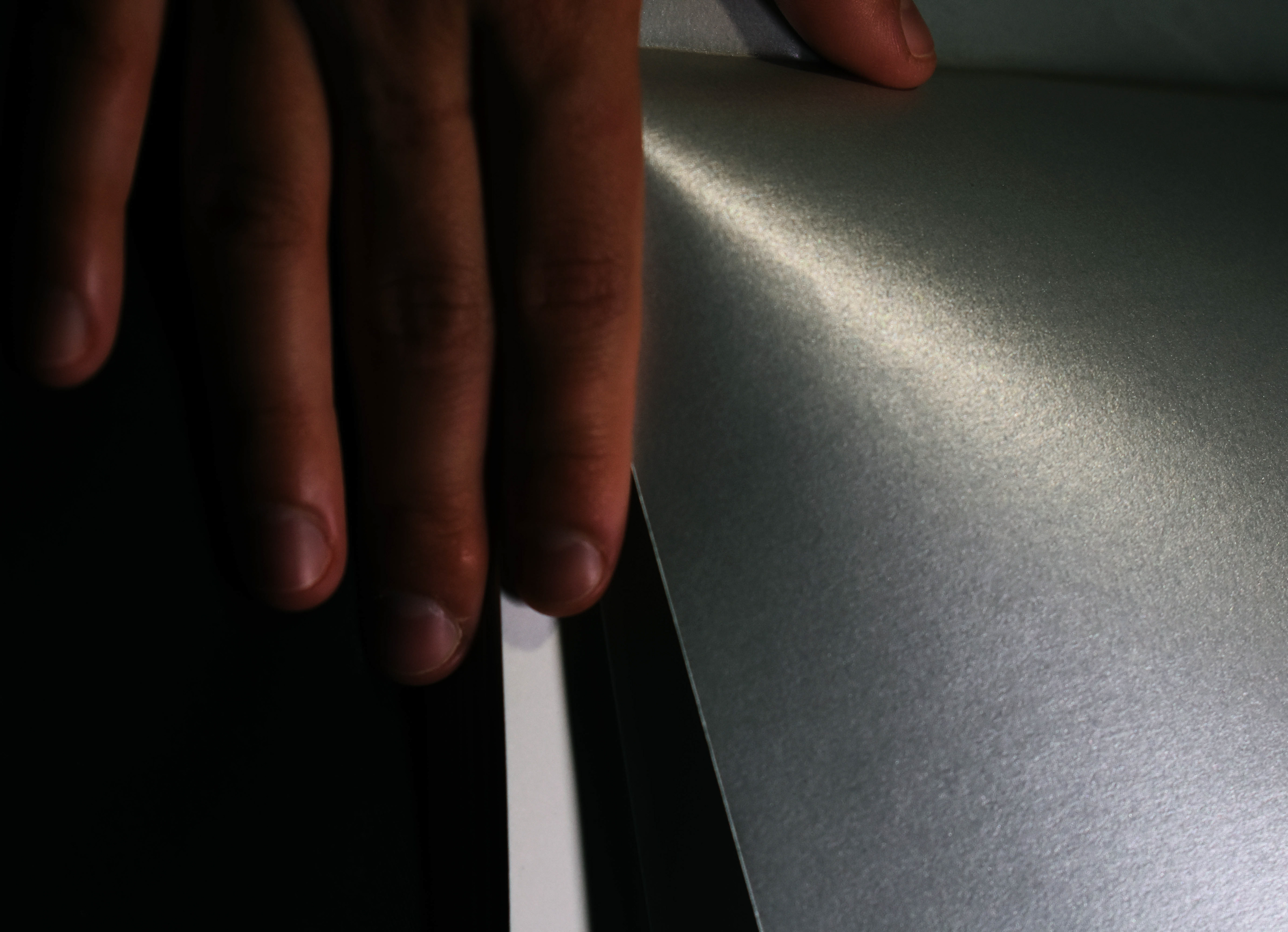
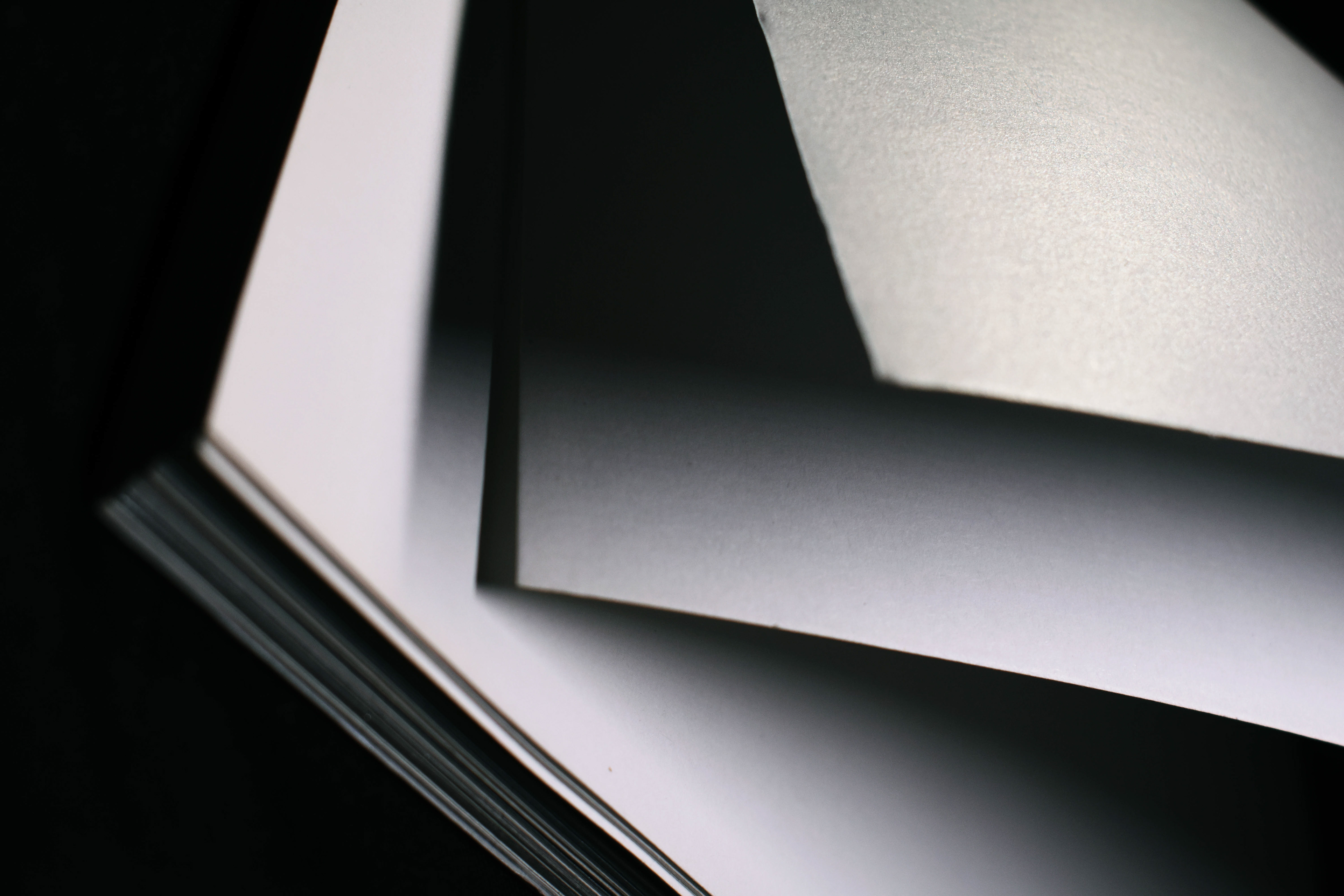
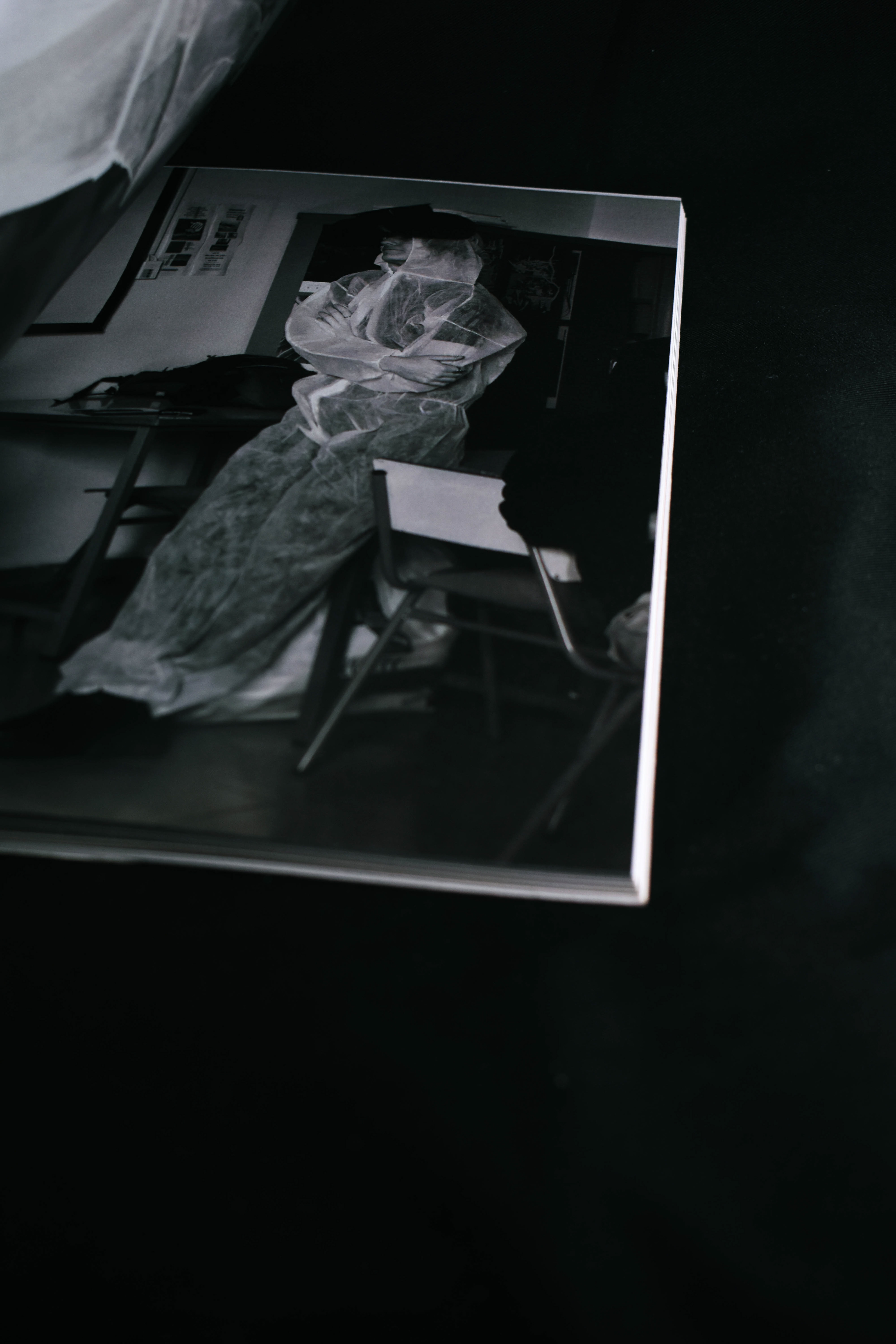


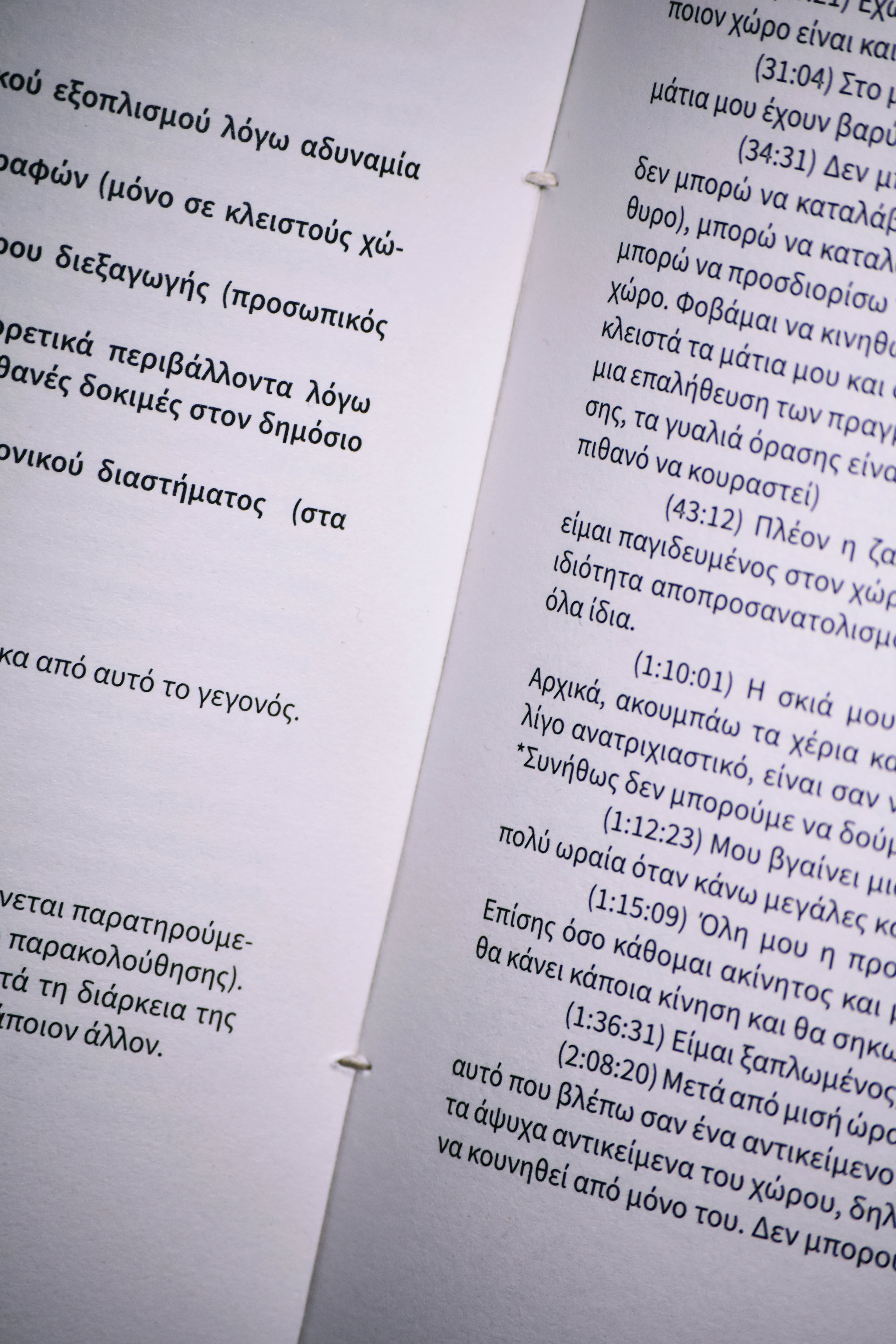
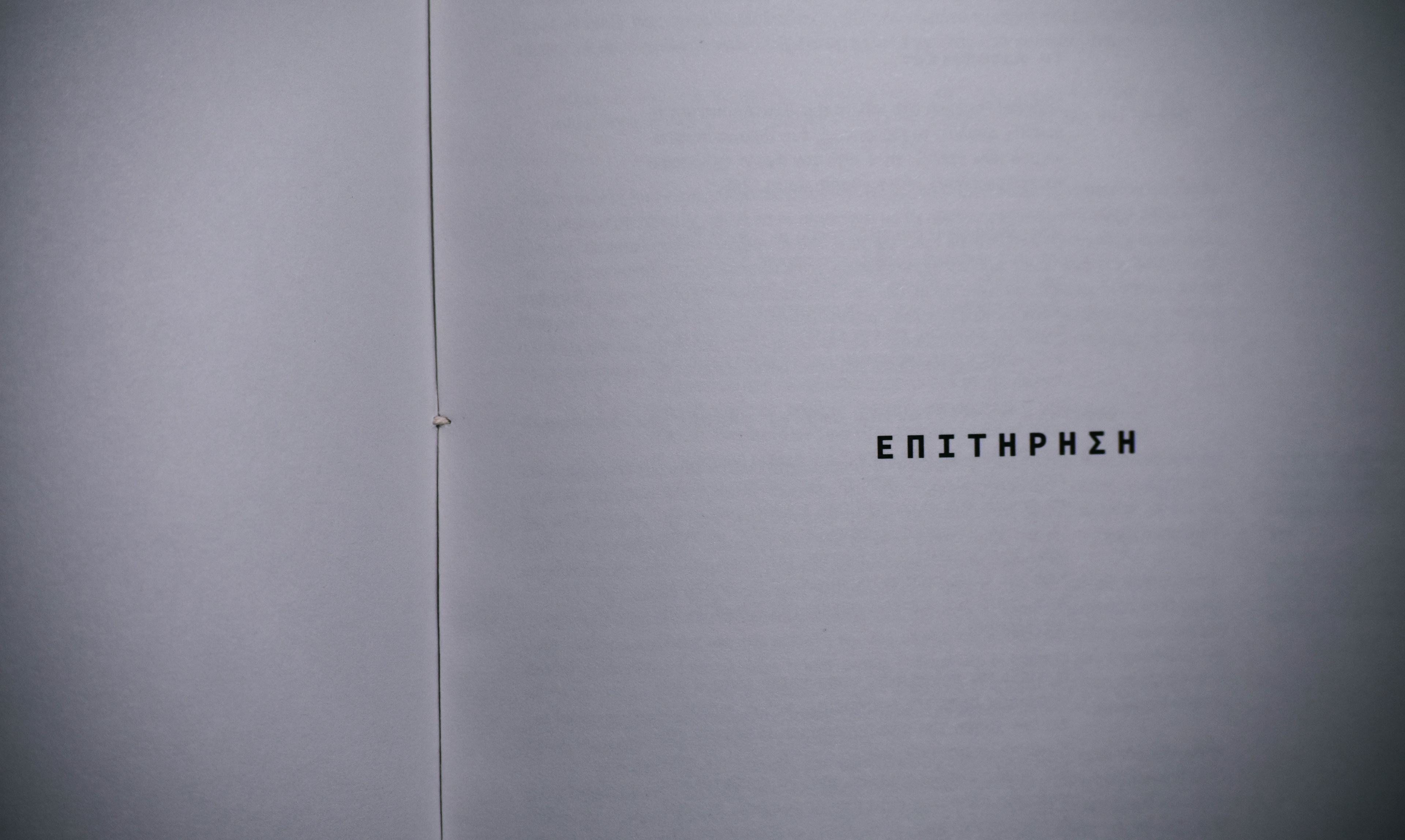
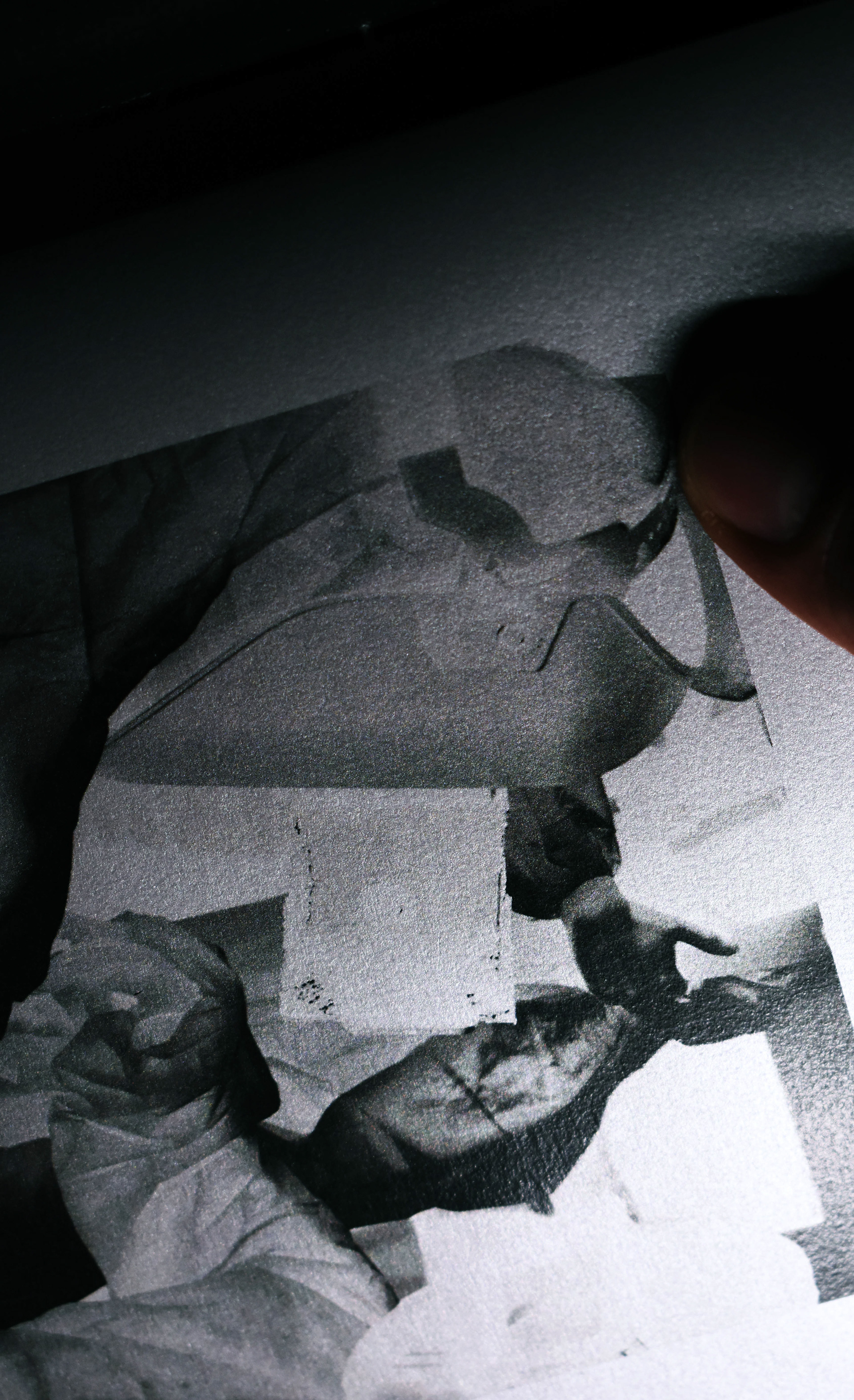

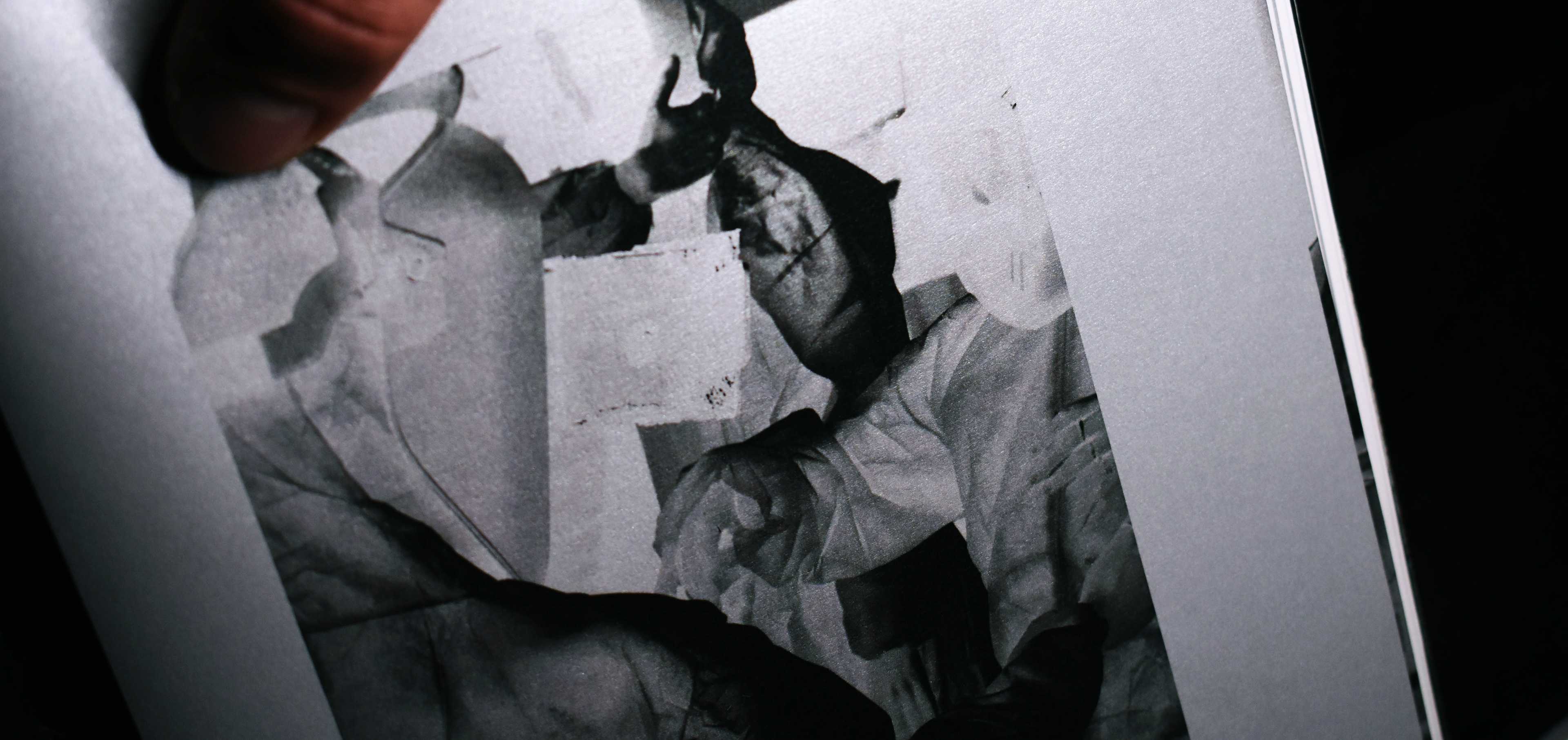

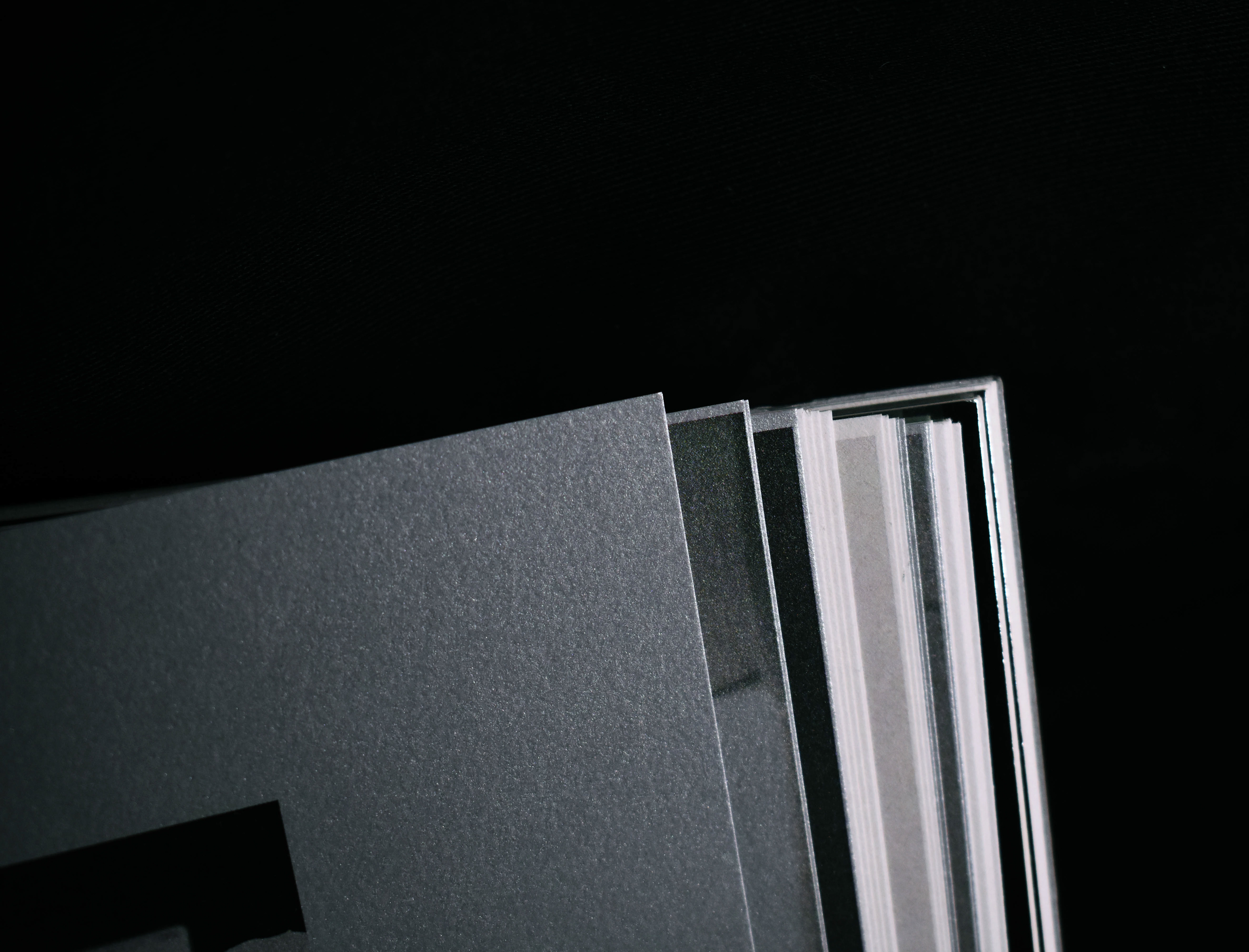
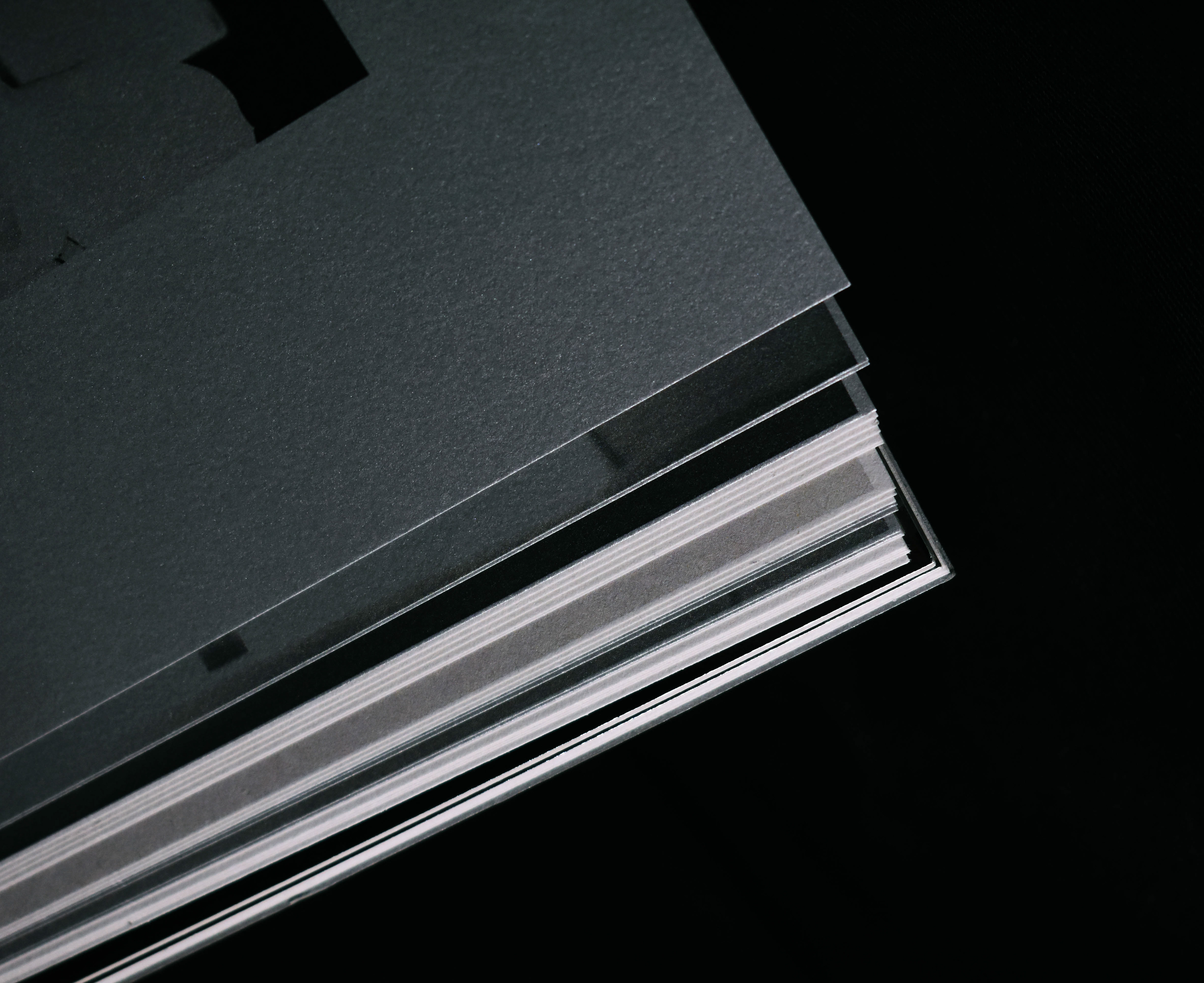
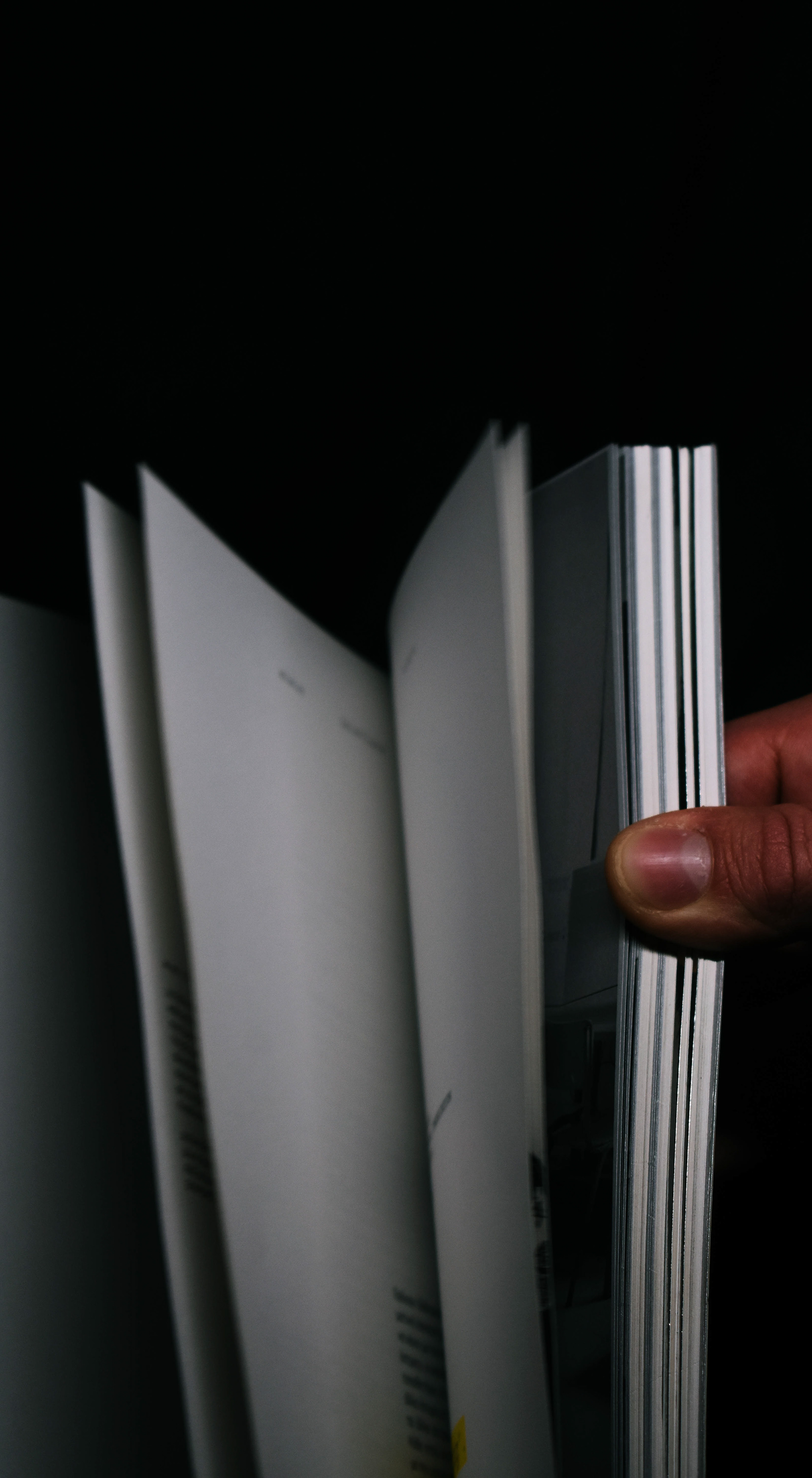

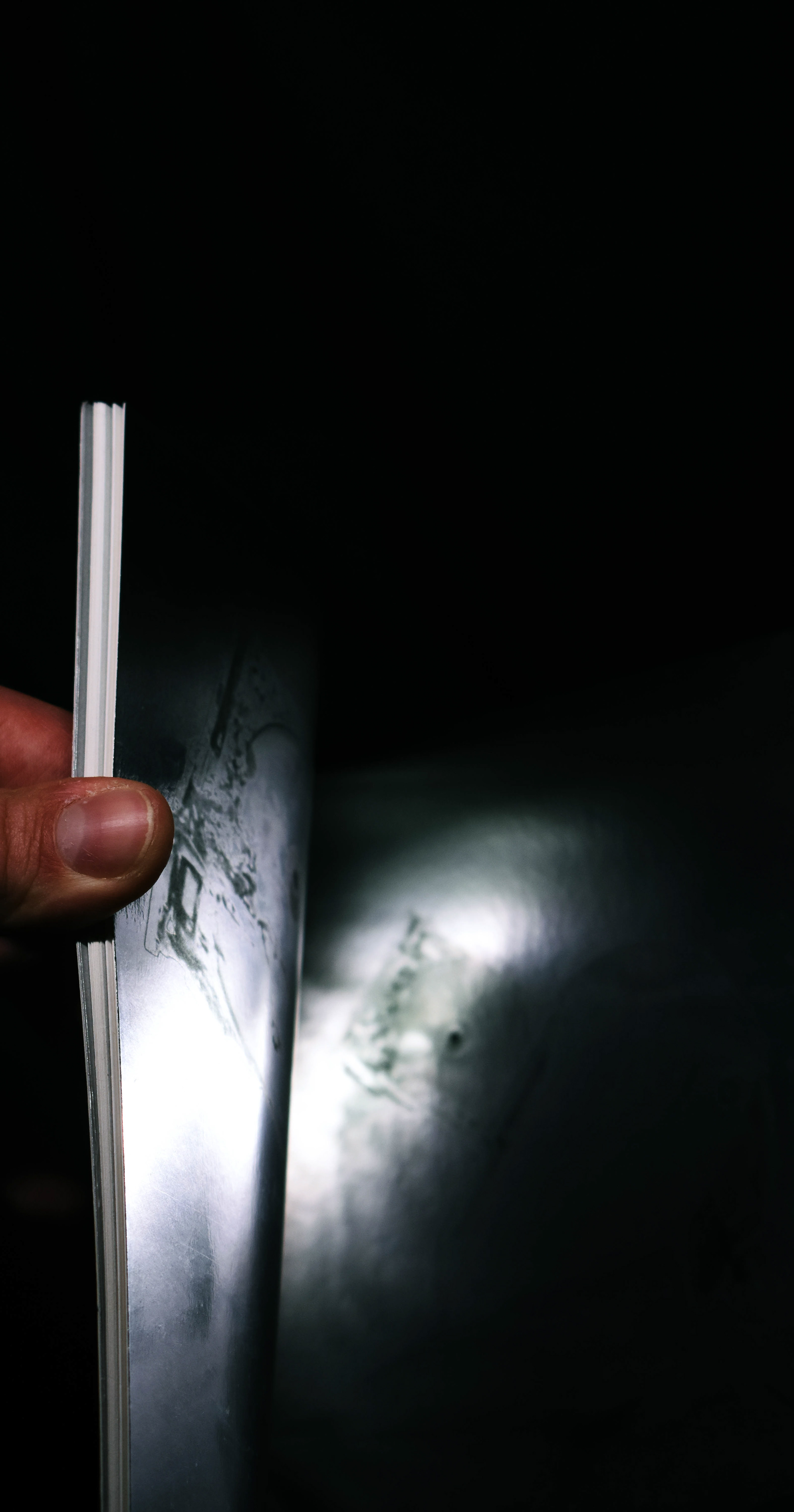

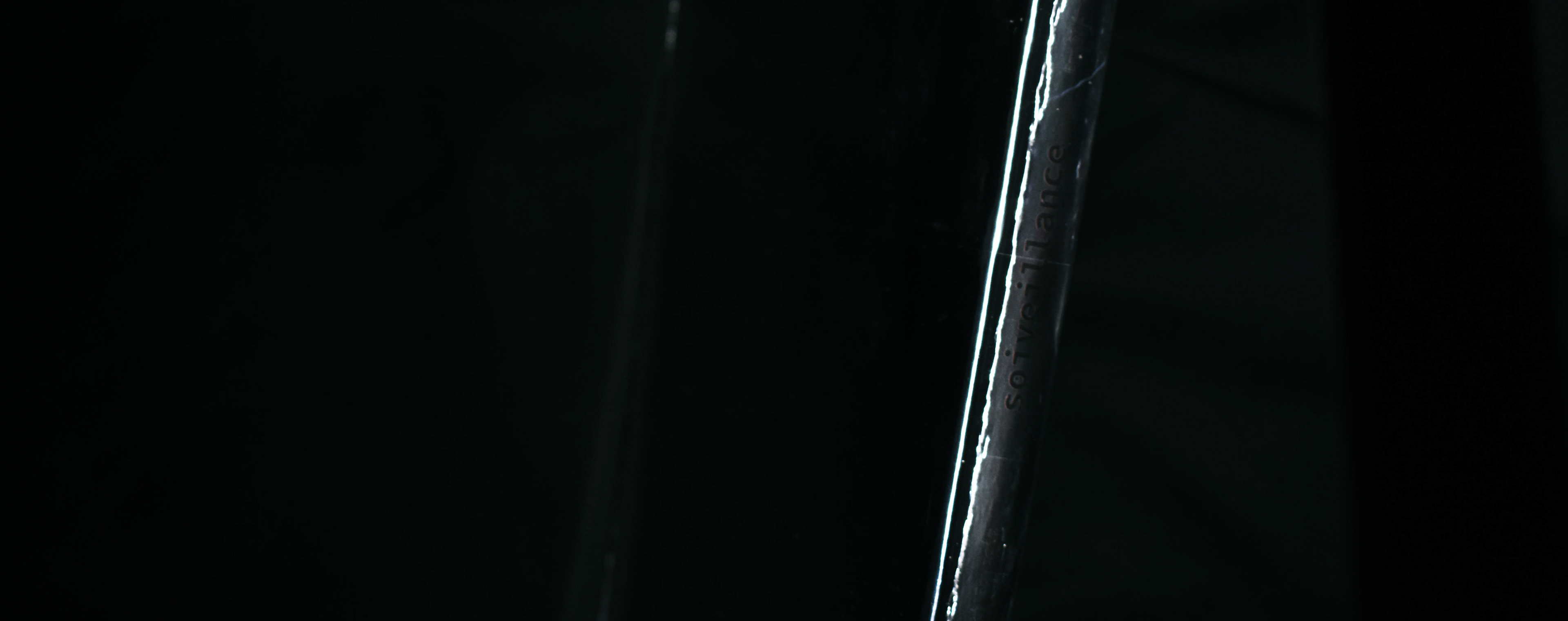

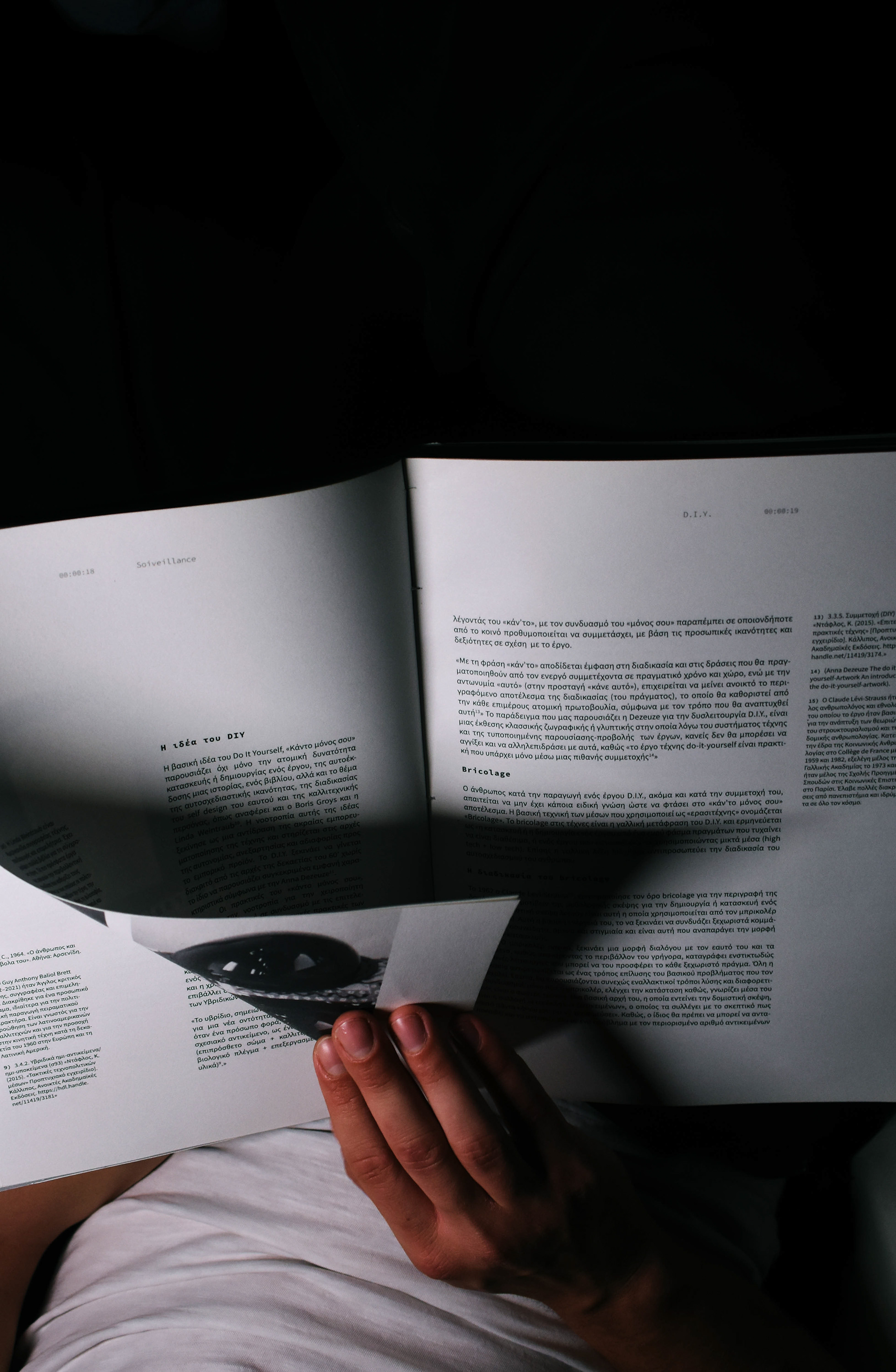
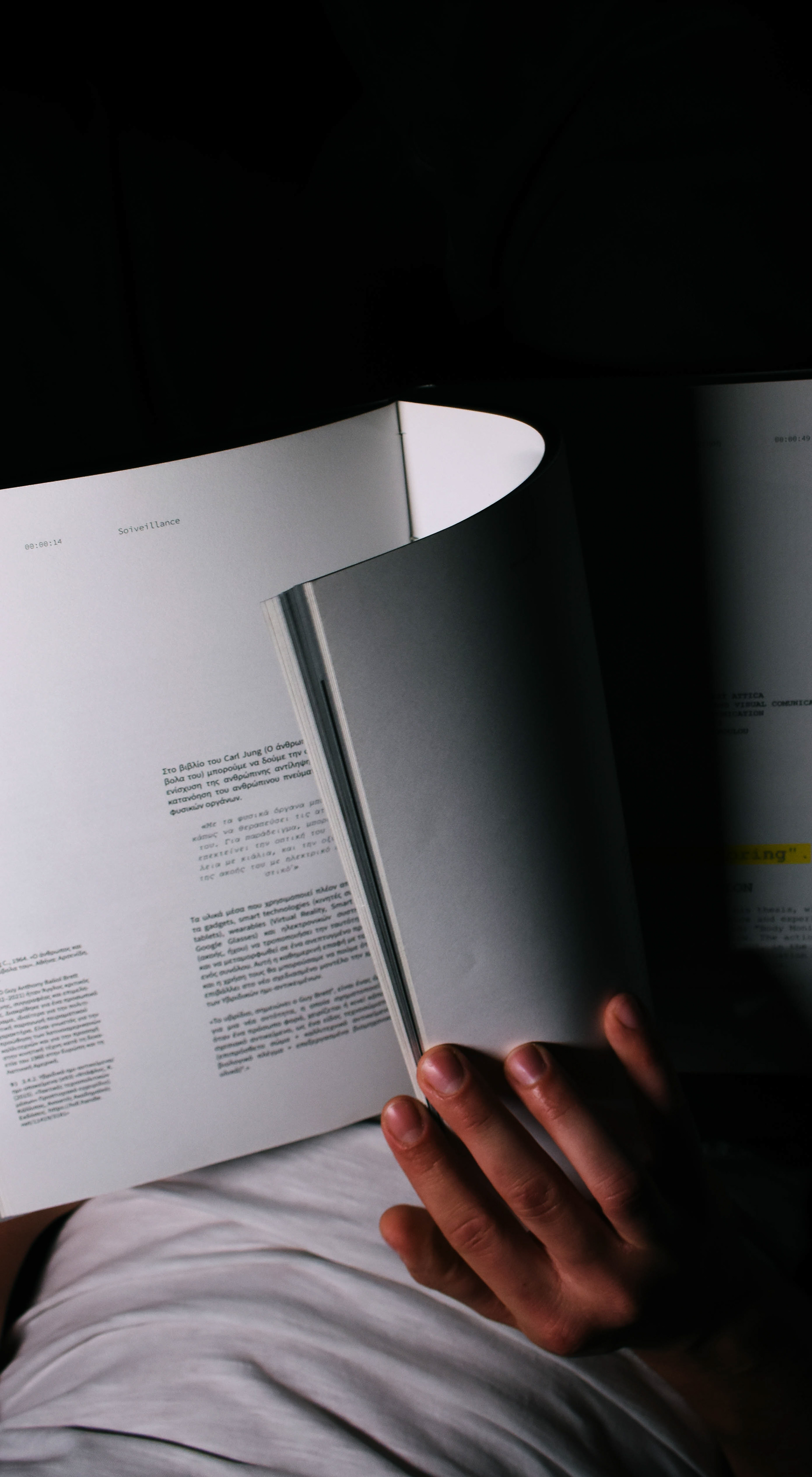
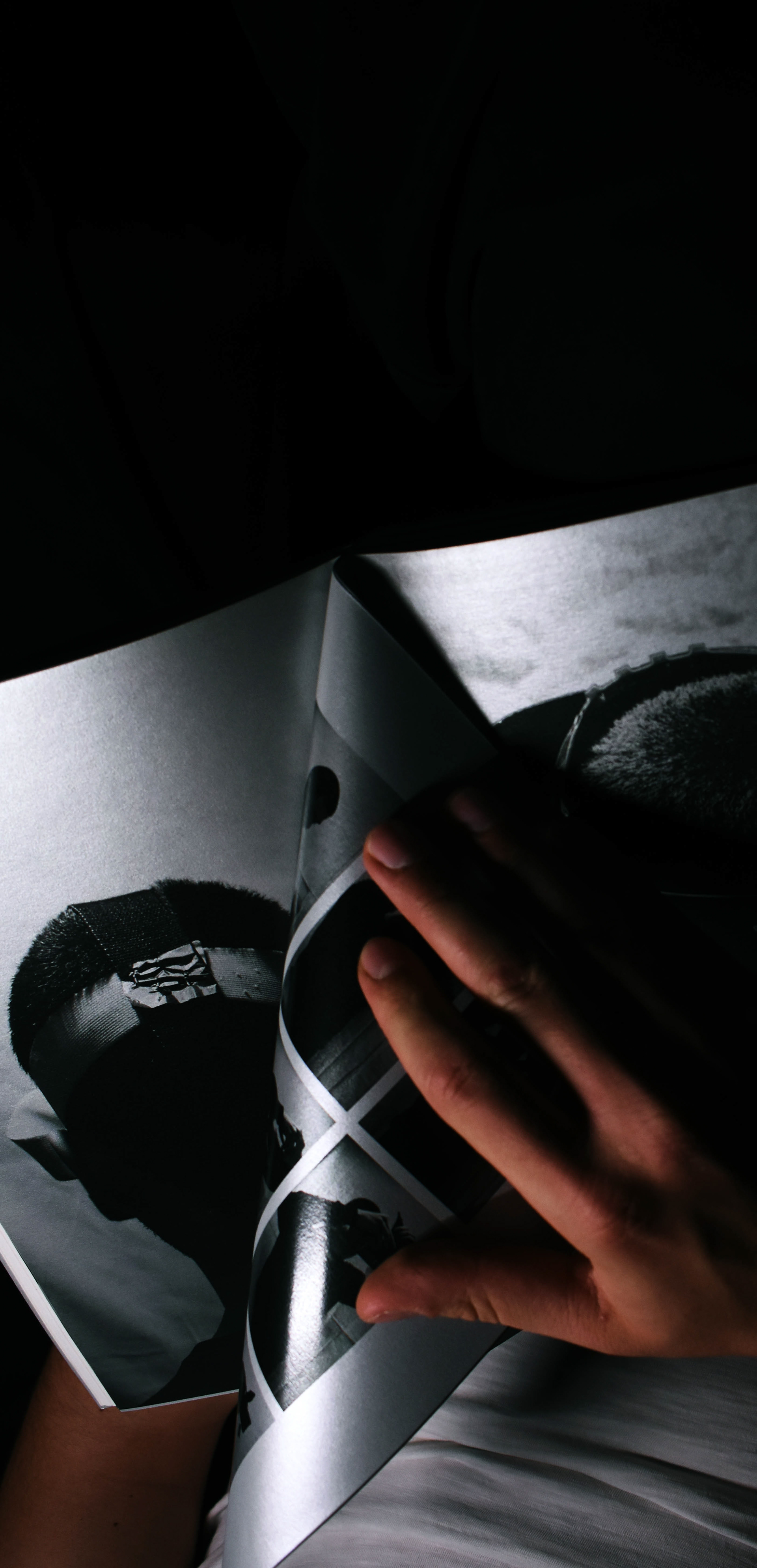


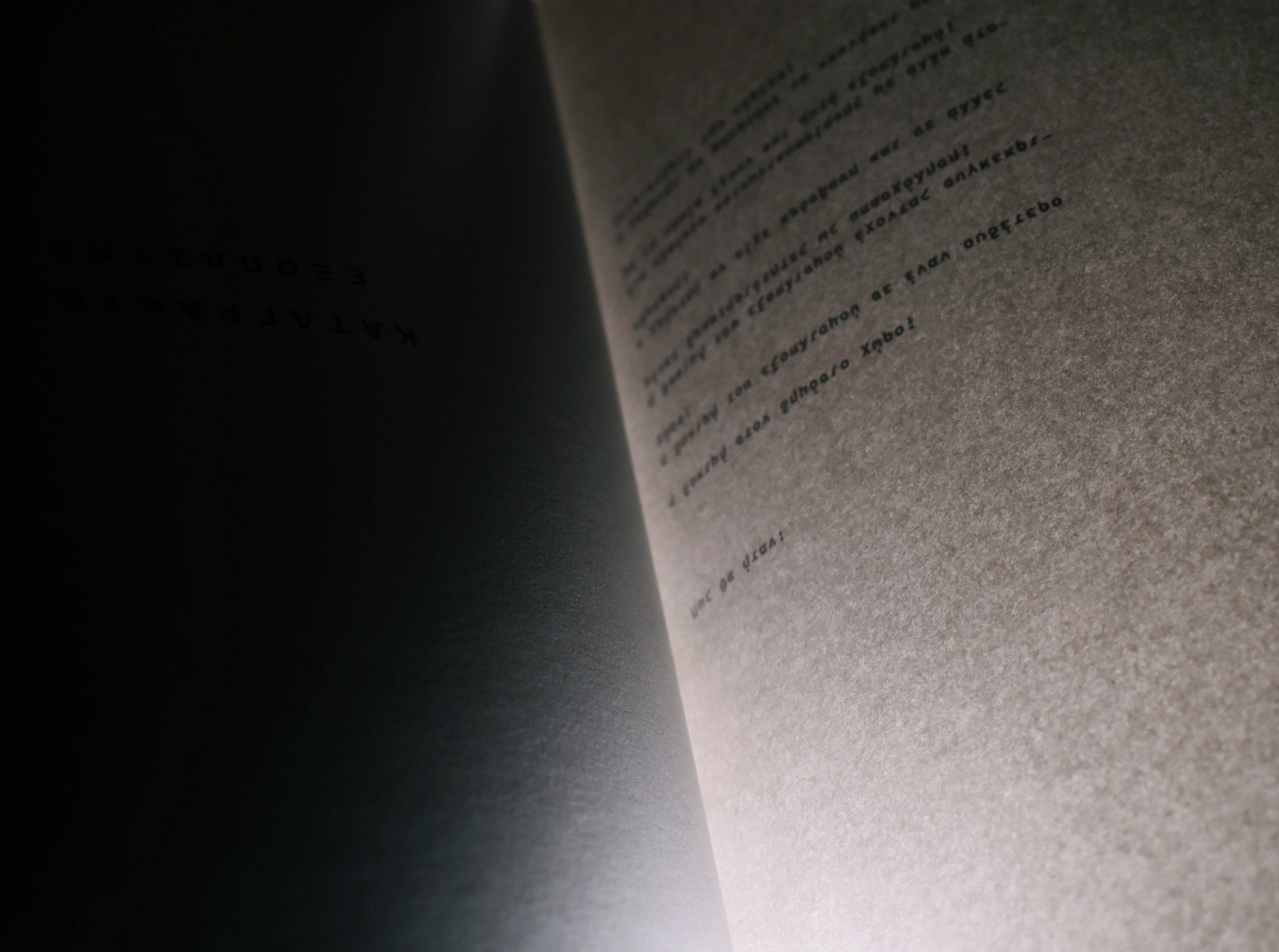
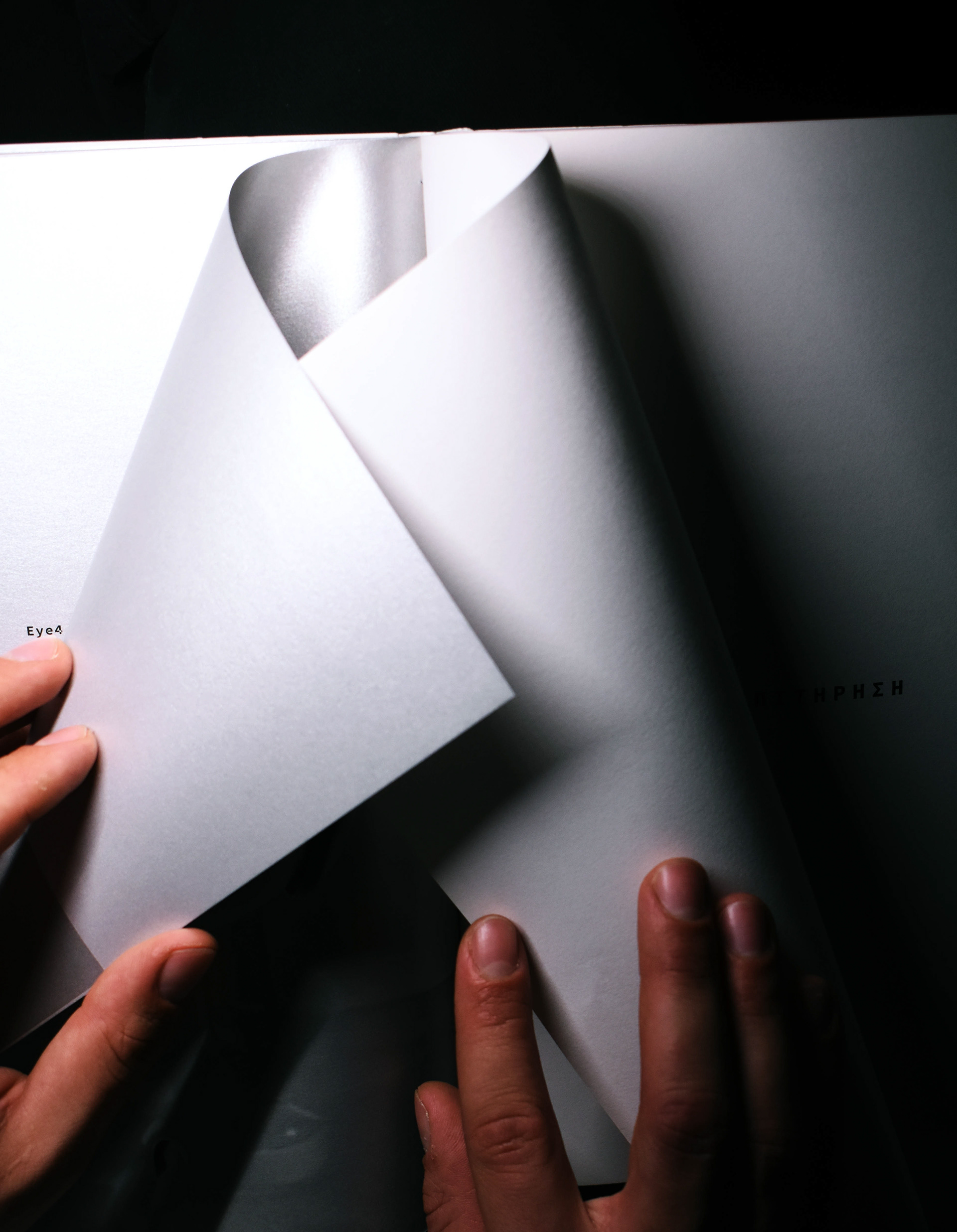


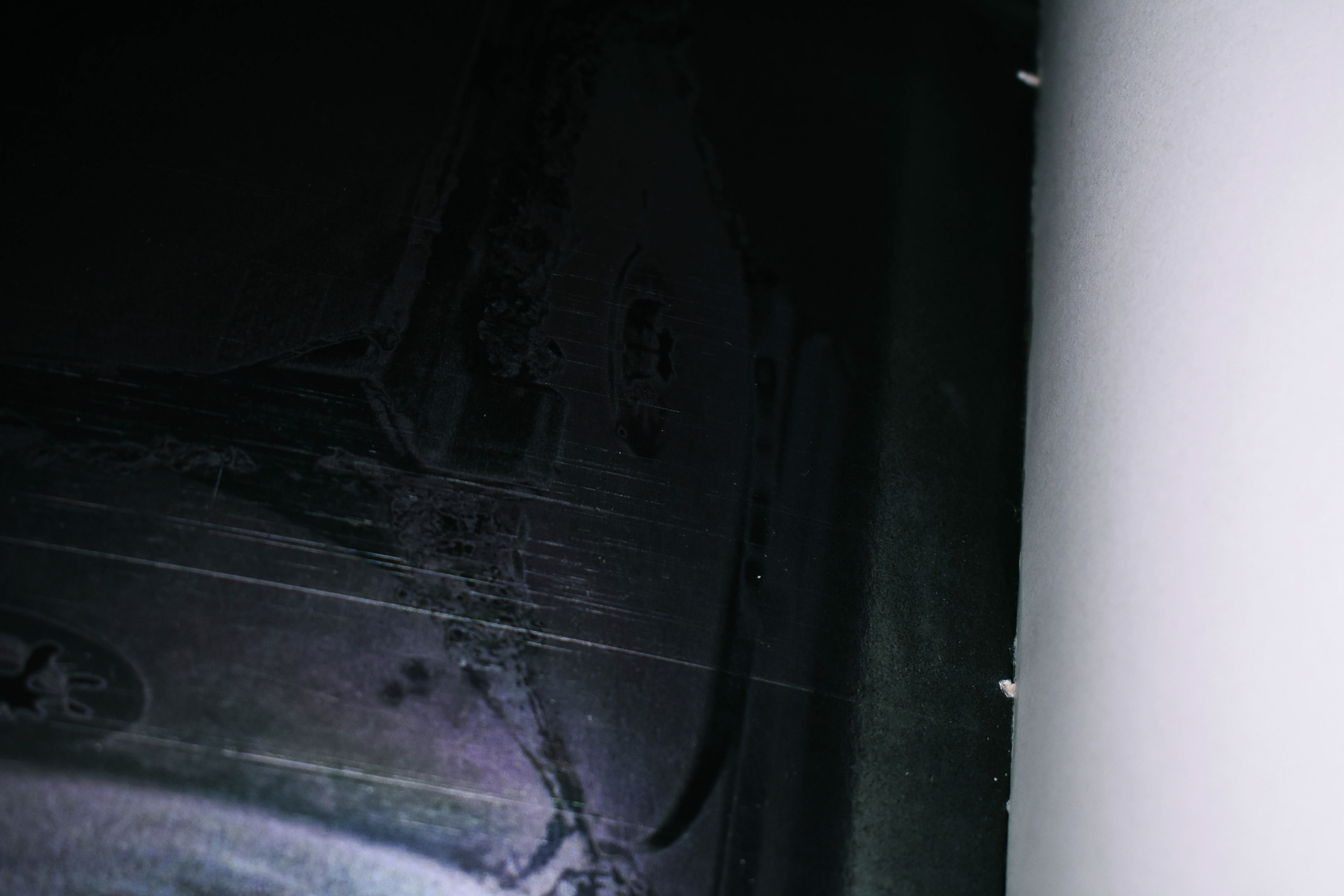

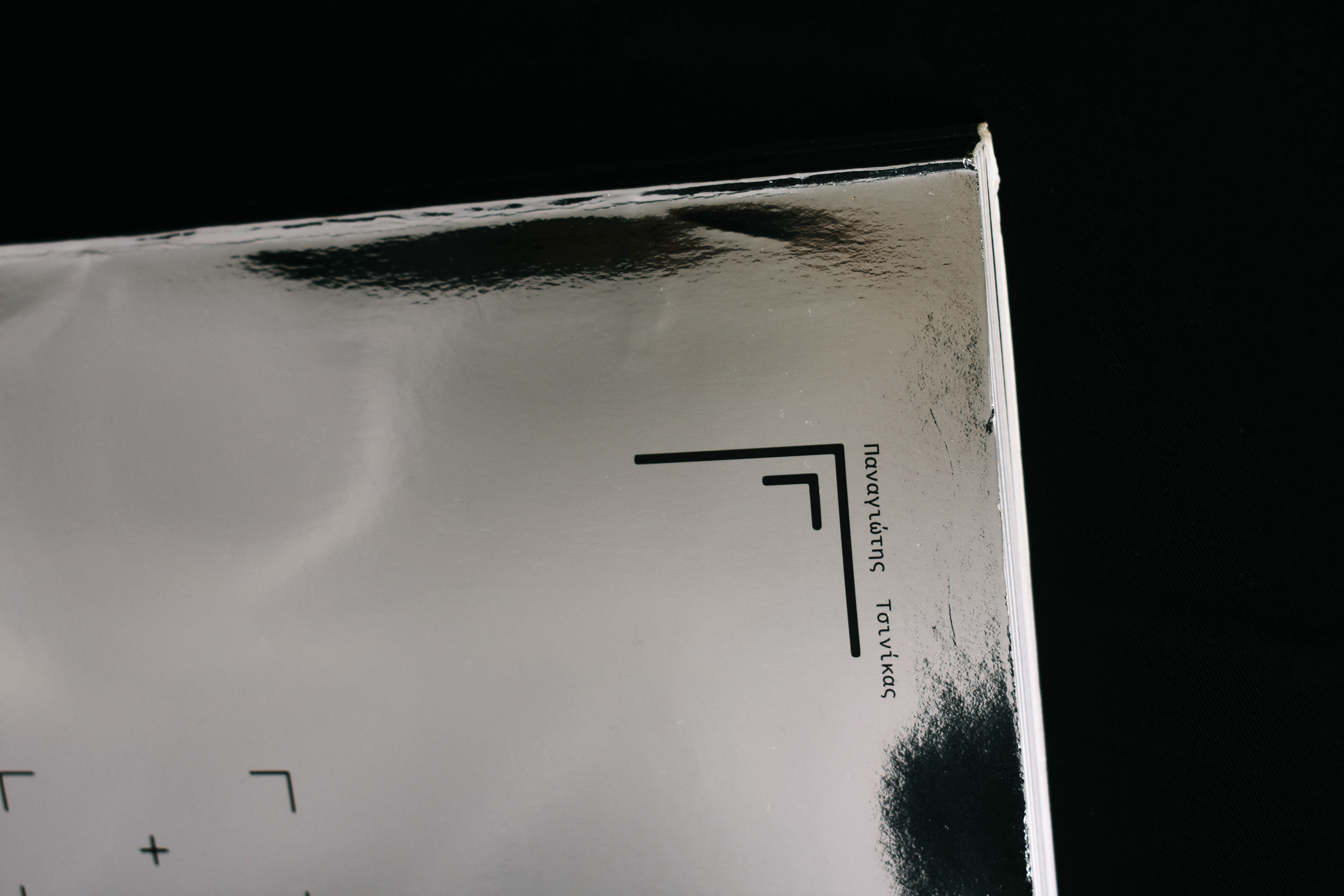
Through the people's questions, new avenues were opened for the use of the equipment in combination with the application of the artistic practices for a future research.
the test in public space?
testing the equipment in a neutral location?
if the user also had access to other cameras?
a context for socializing with other people who also have equipment?
if the user could move the camera with a controller?
I would like to thank those who participated in the recordings and showed interest, my friends who helped me in times of need, Olga Karagianni for the photos, Filotexno for the printing solutions and Mrs. Chalivopoulou for the constant guidance in the research.